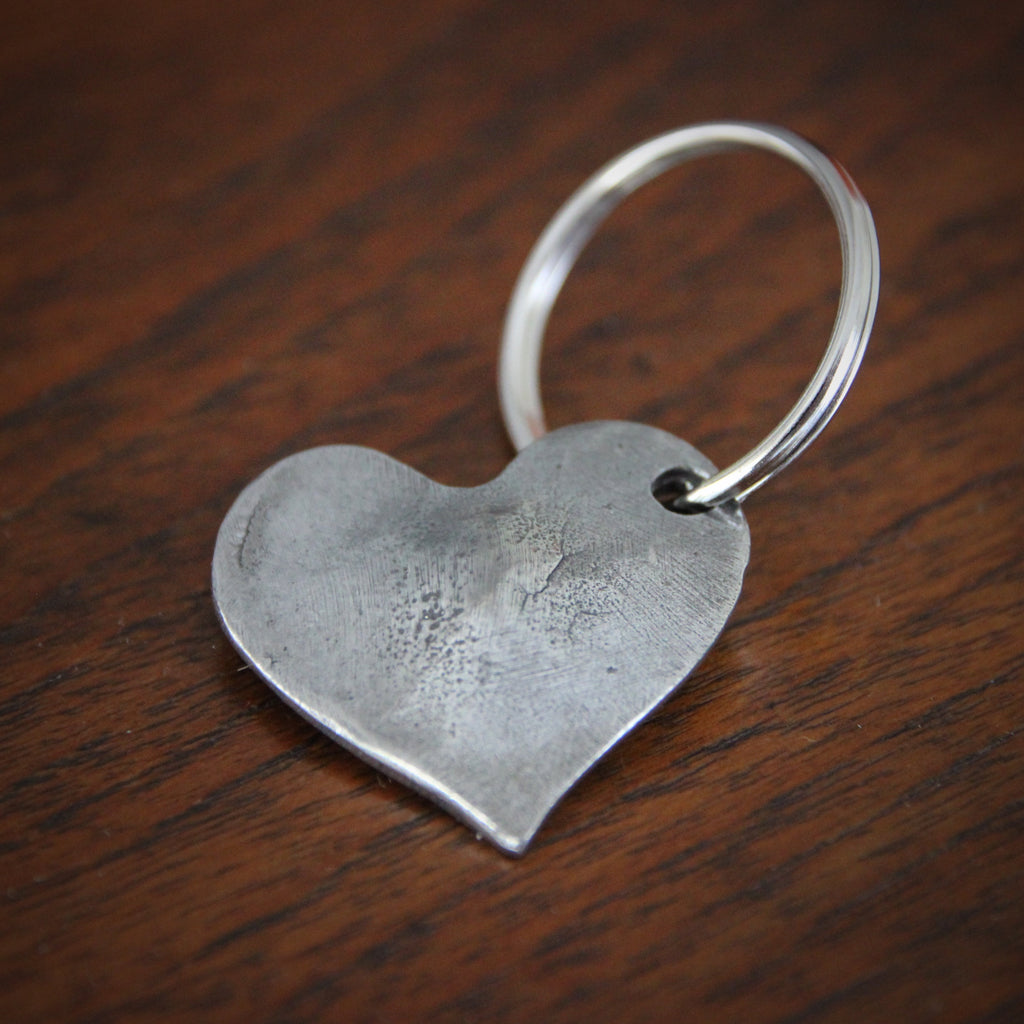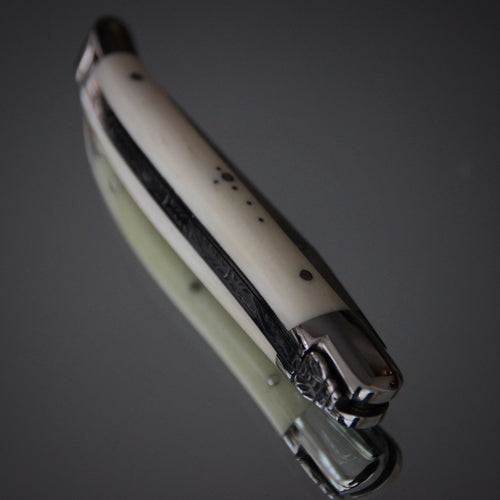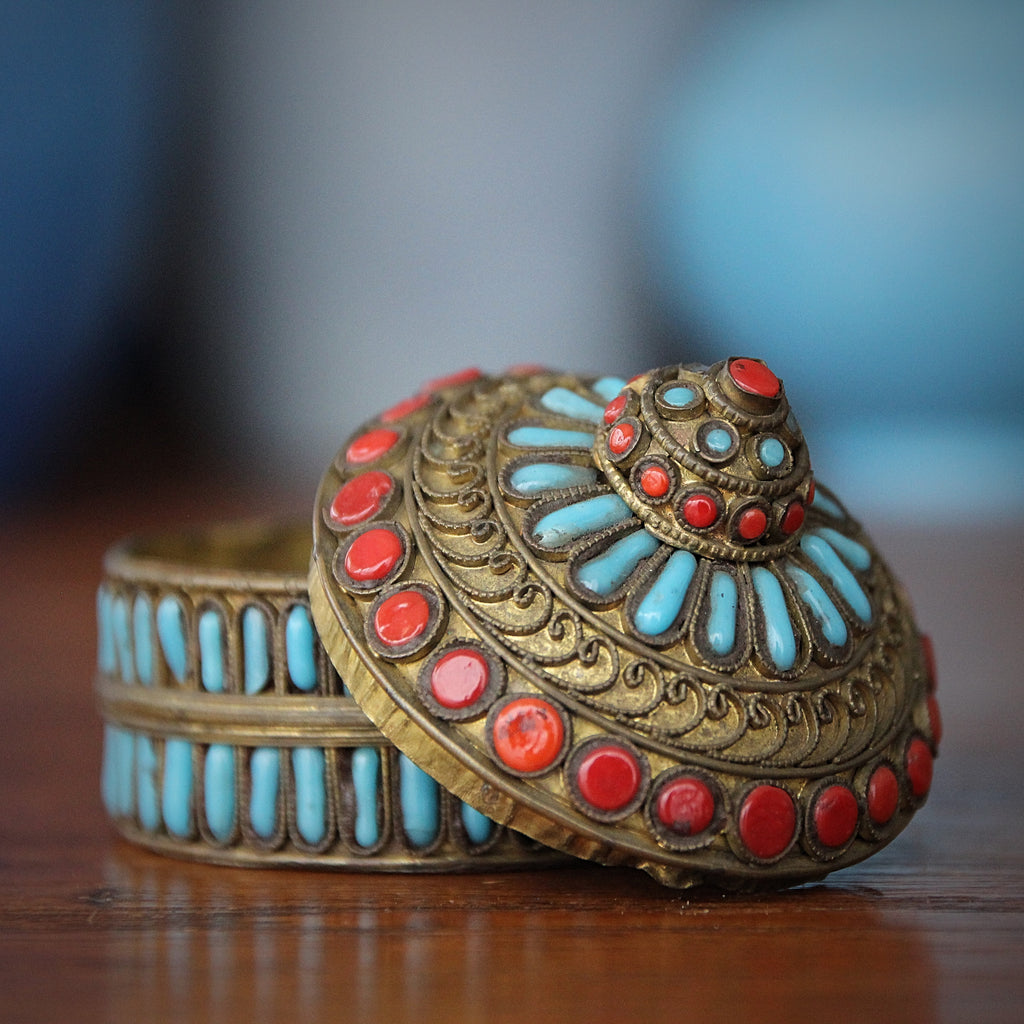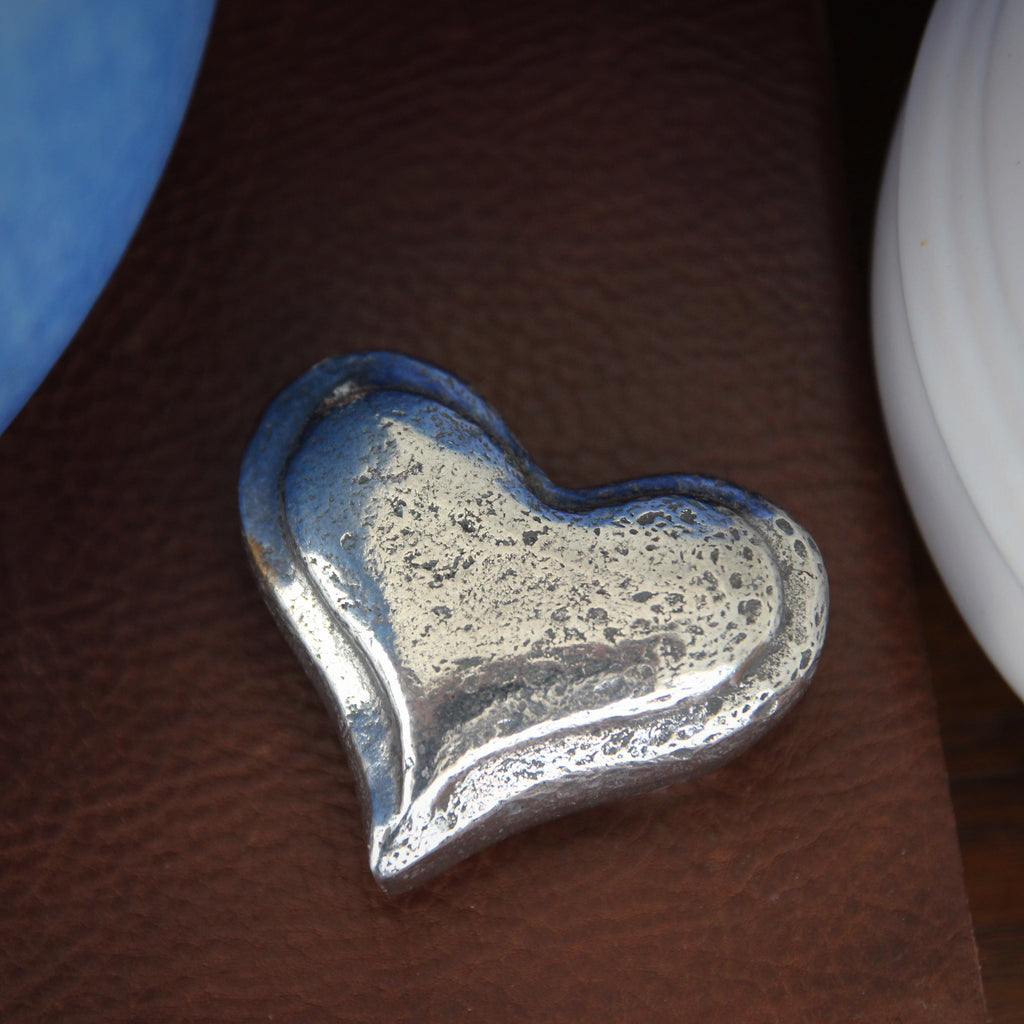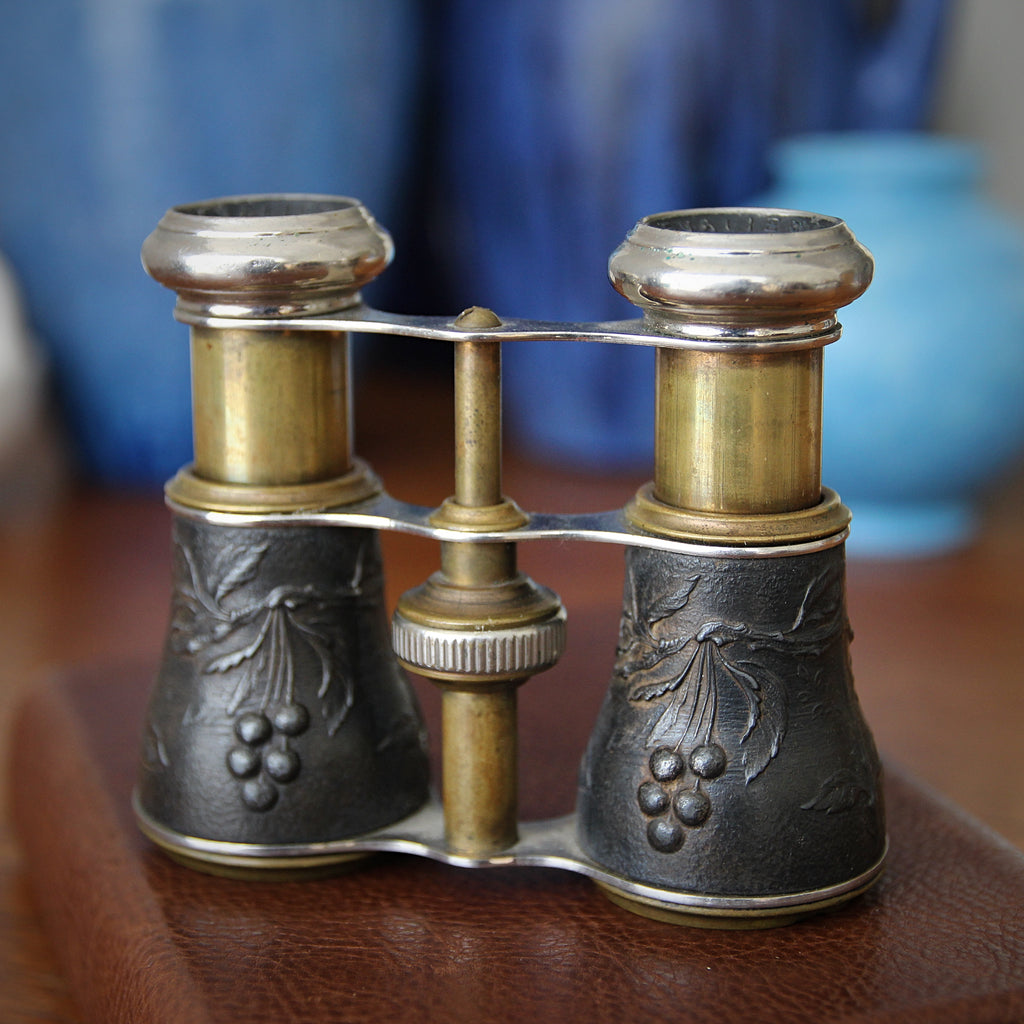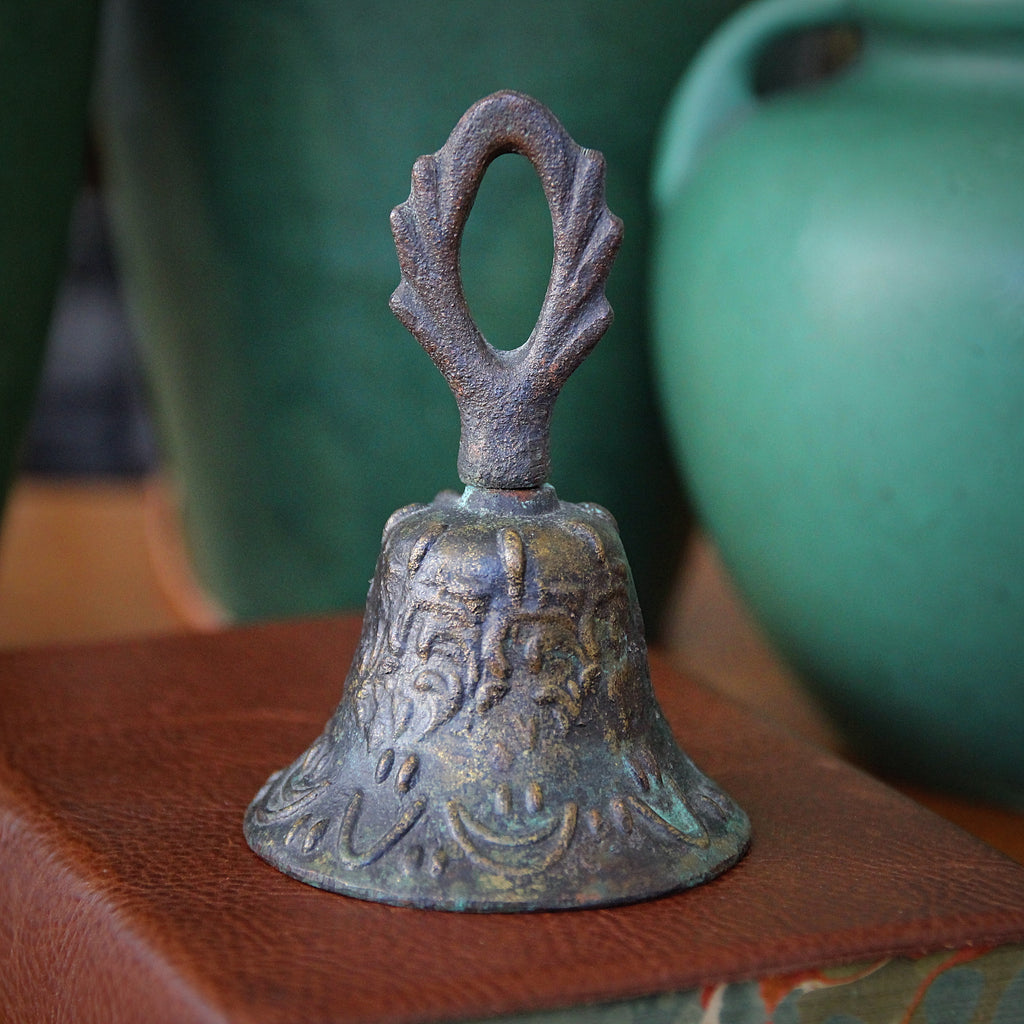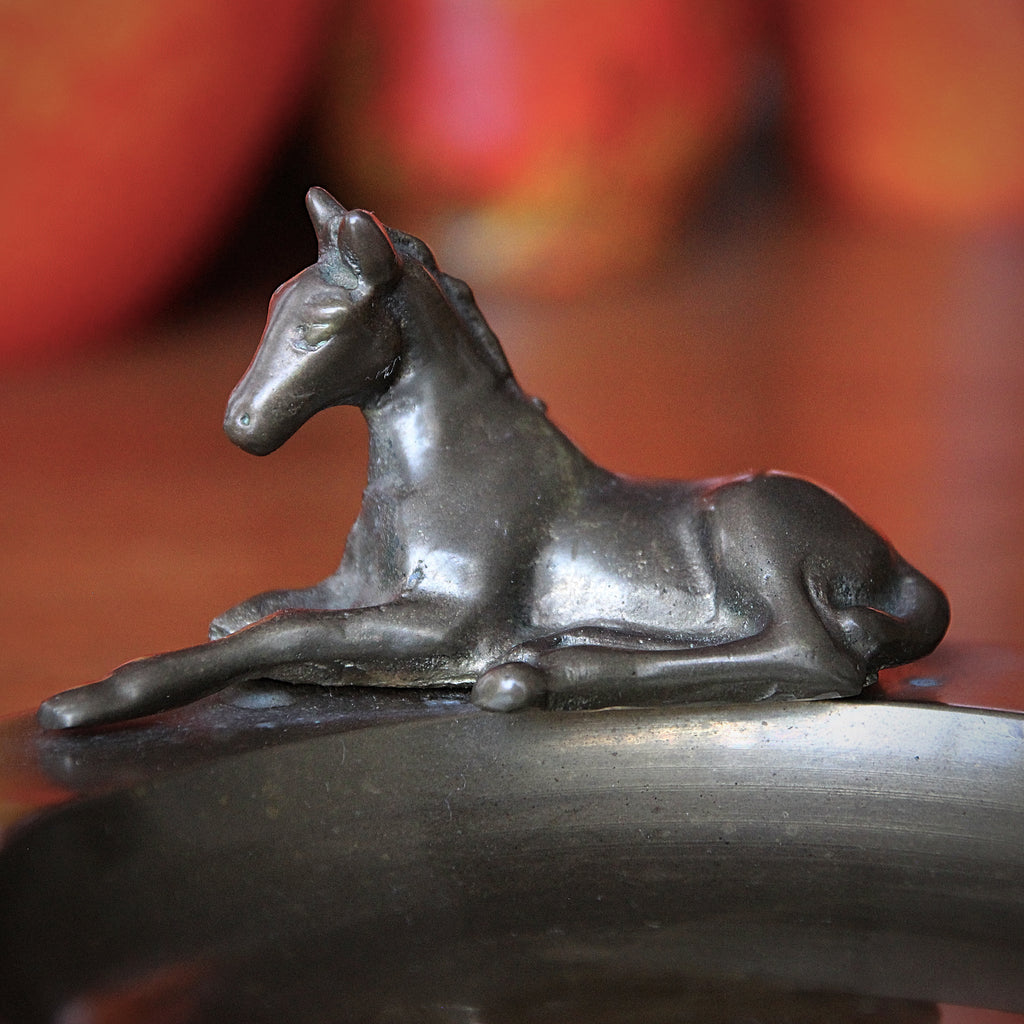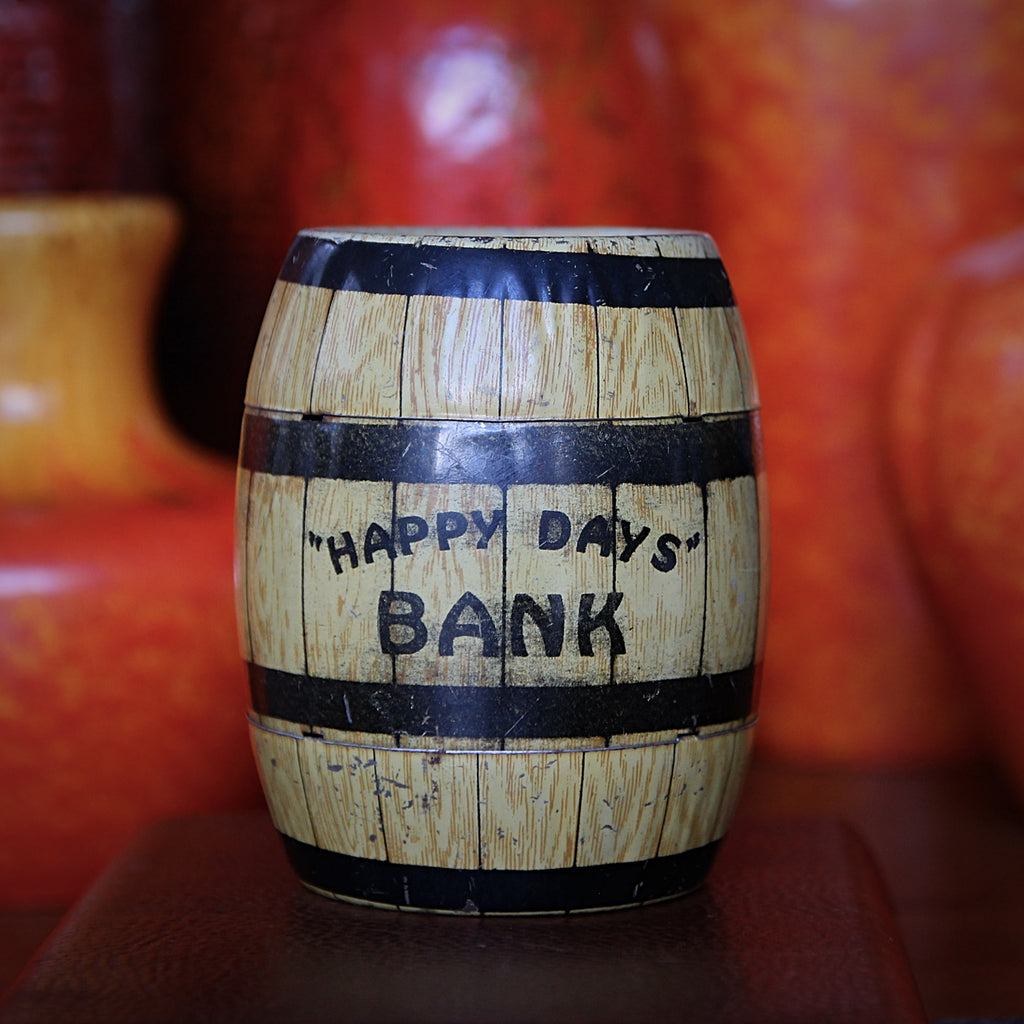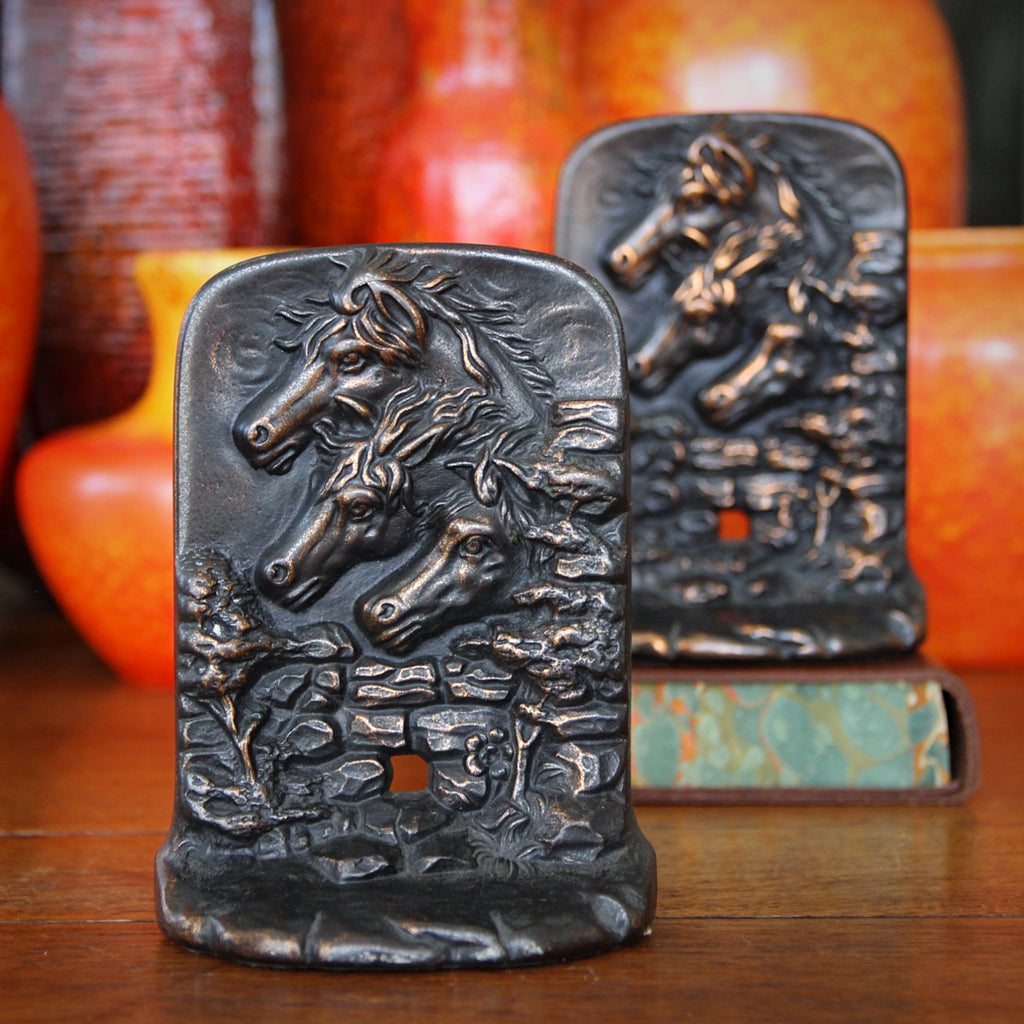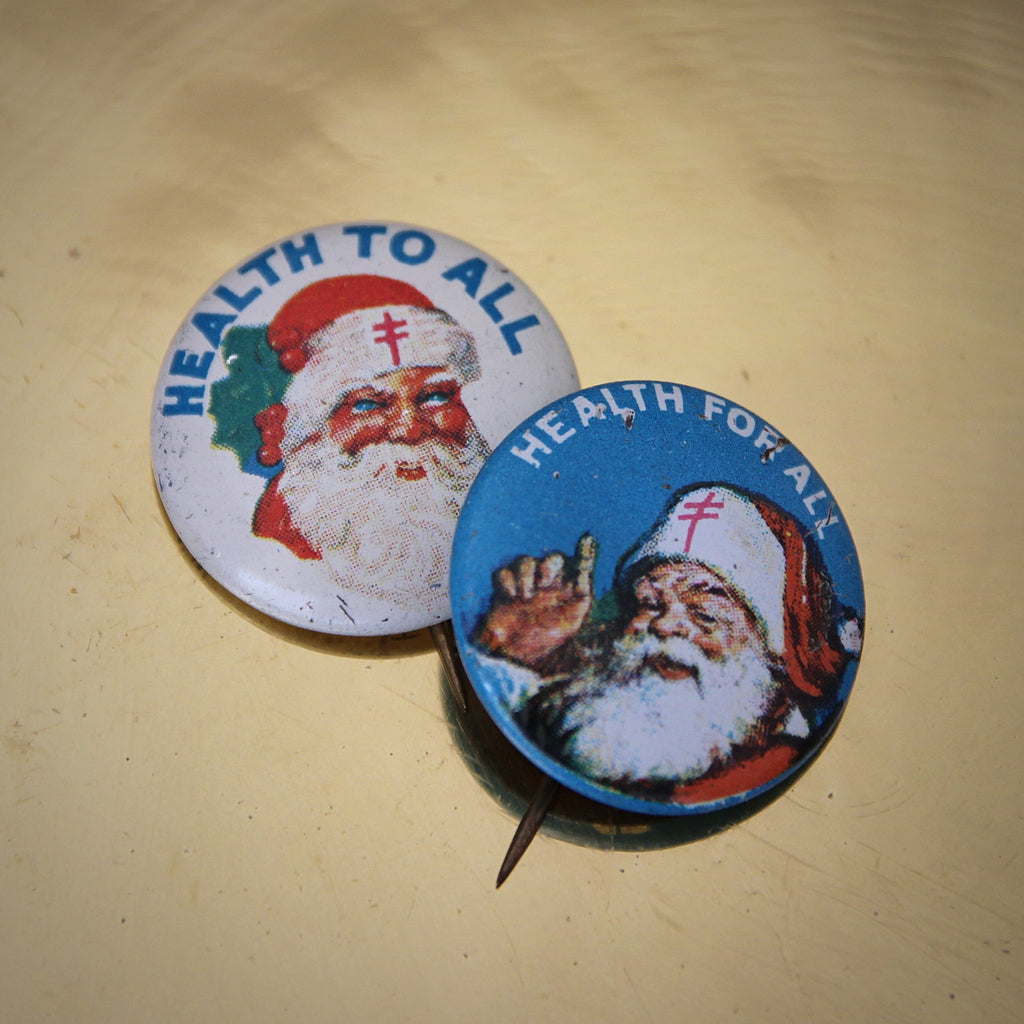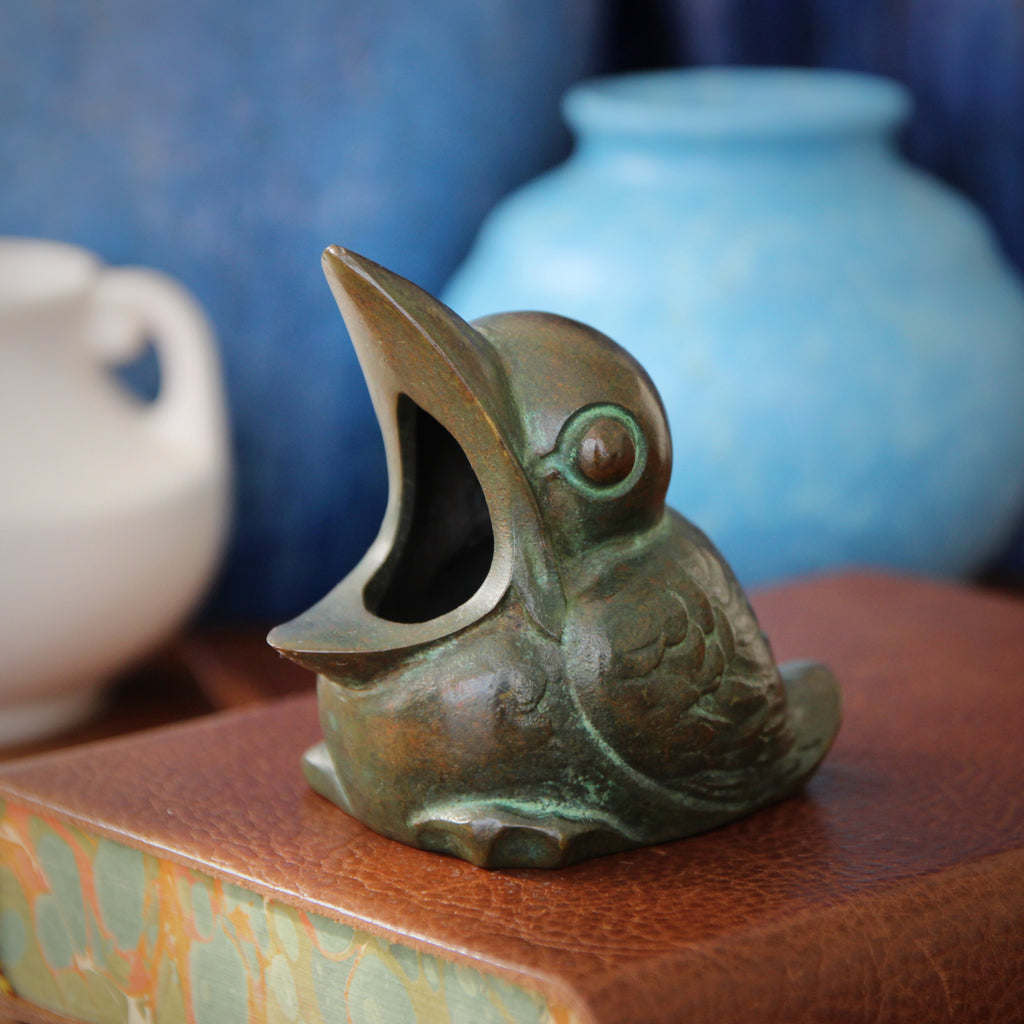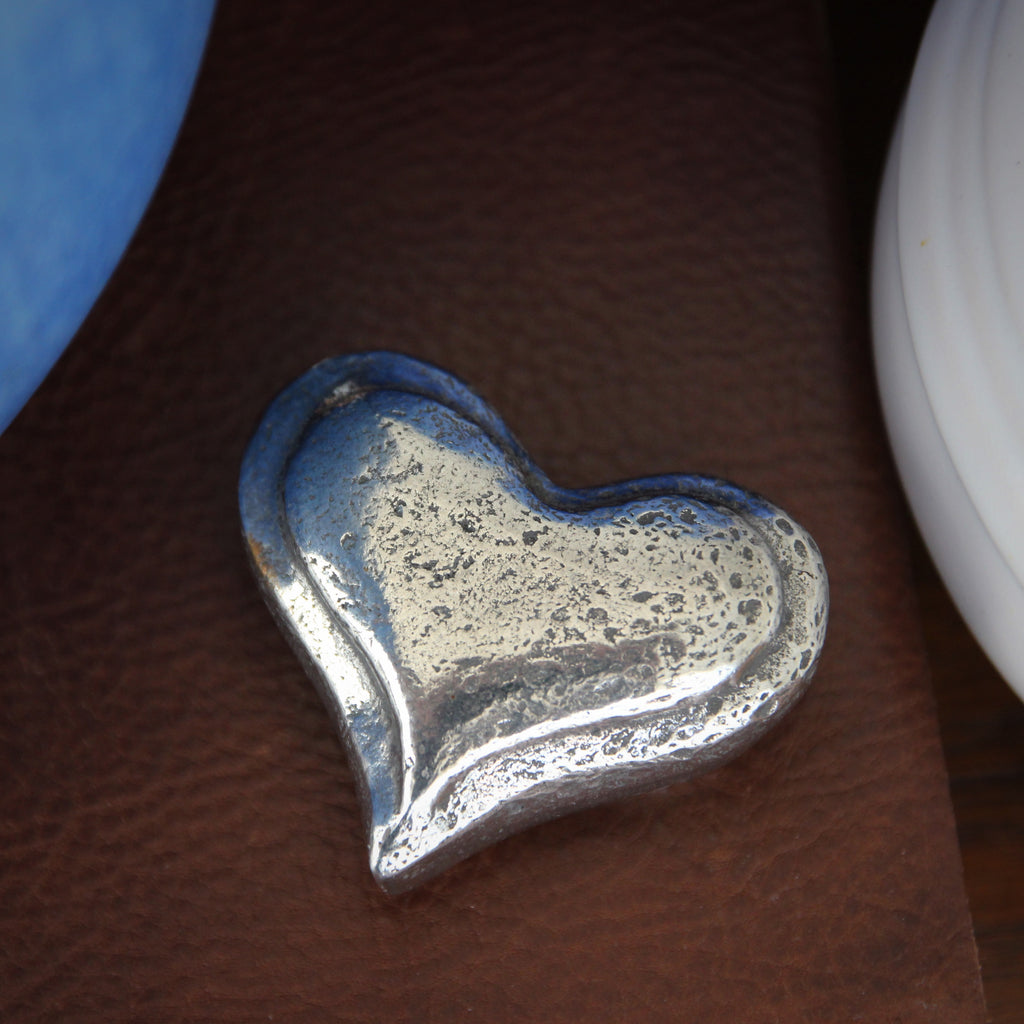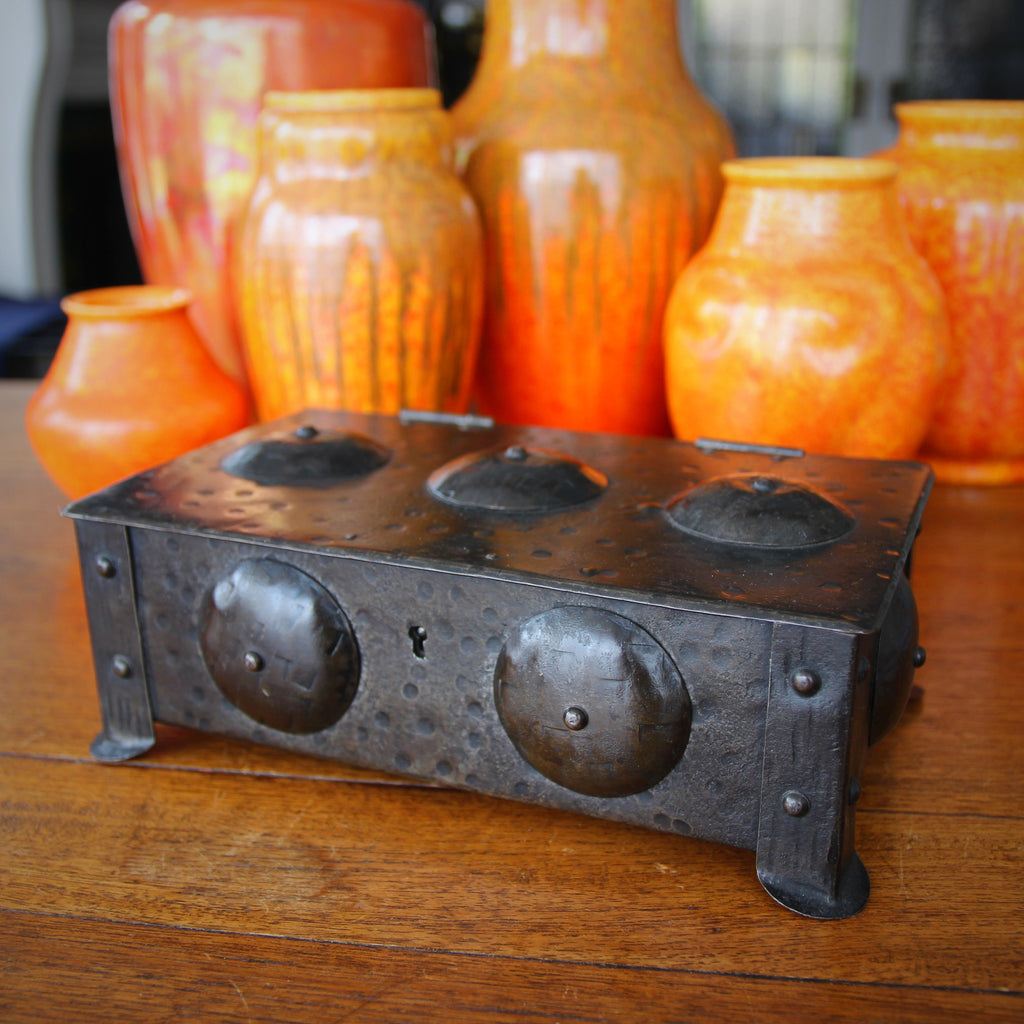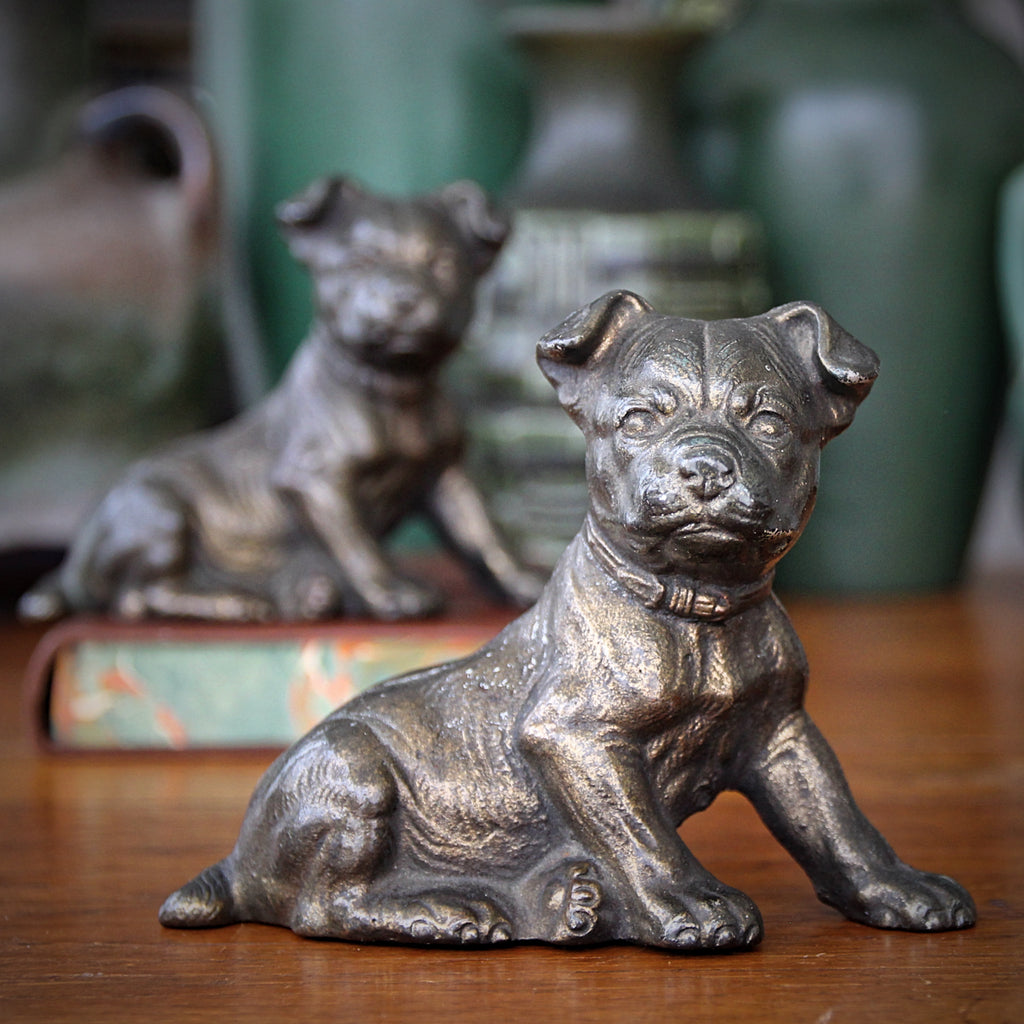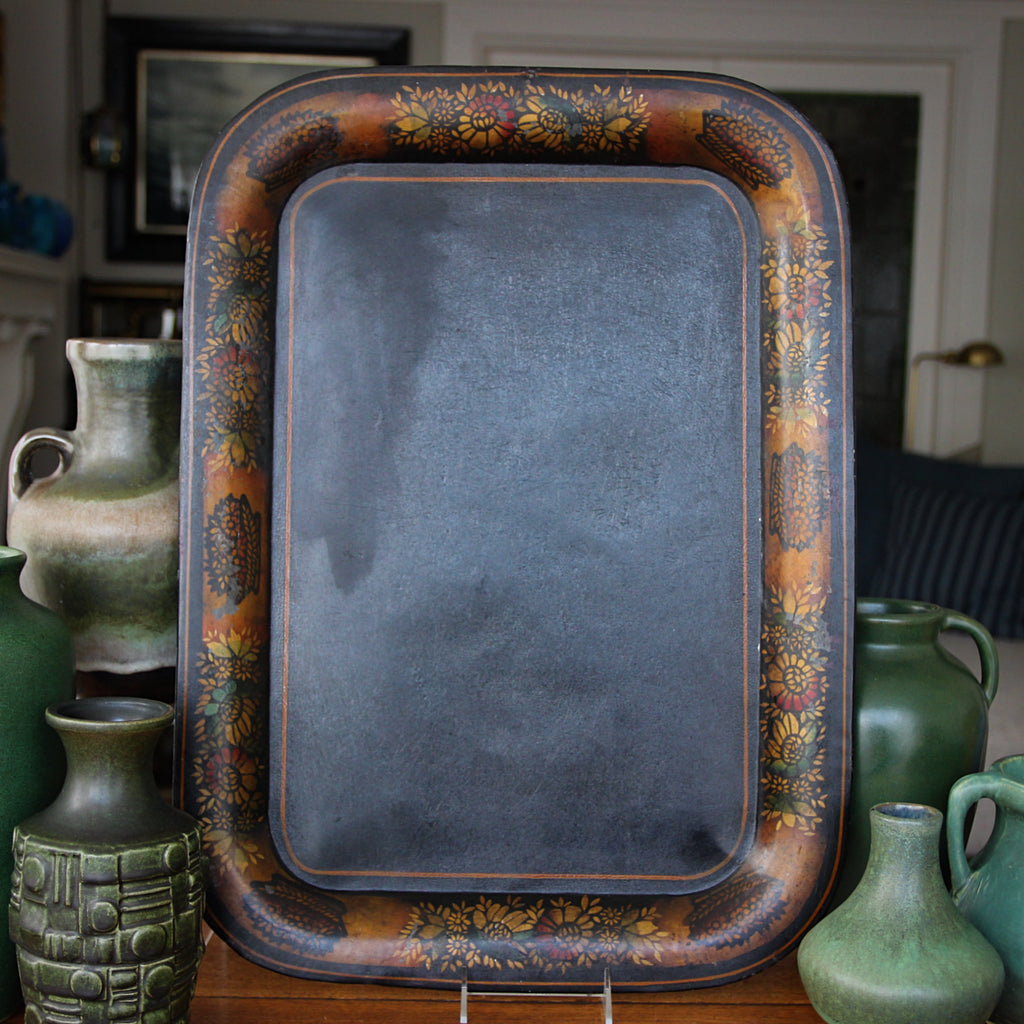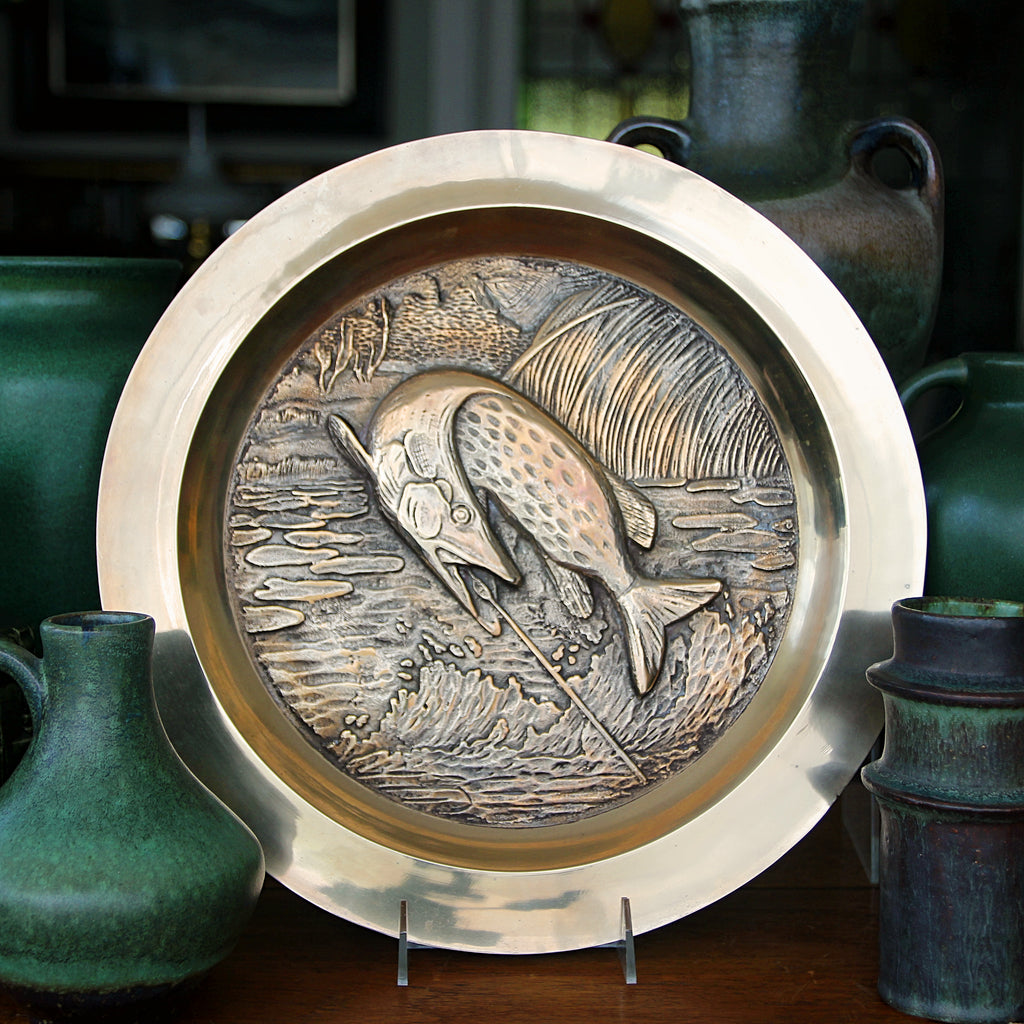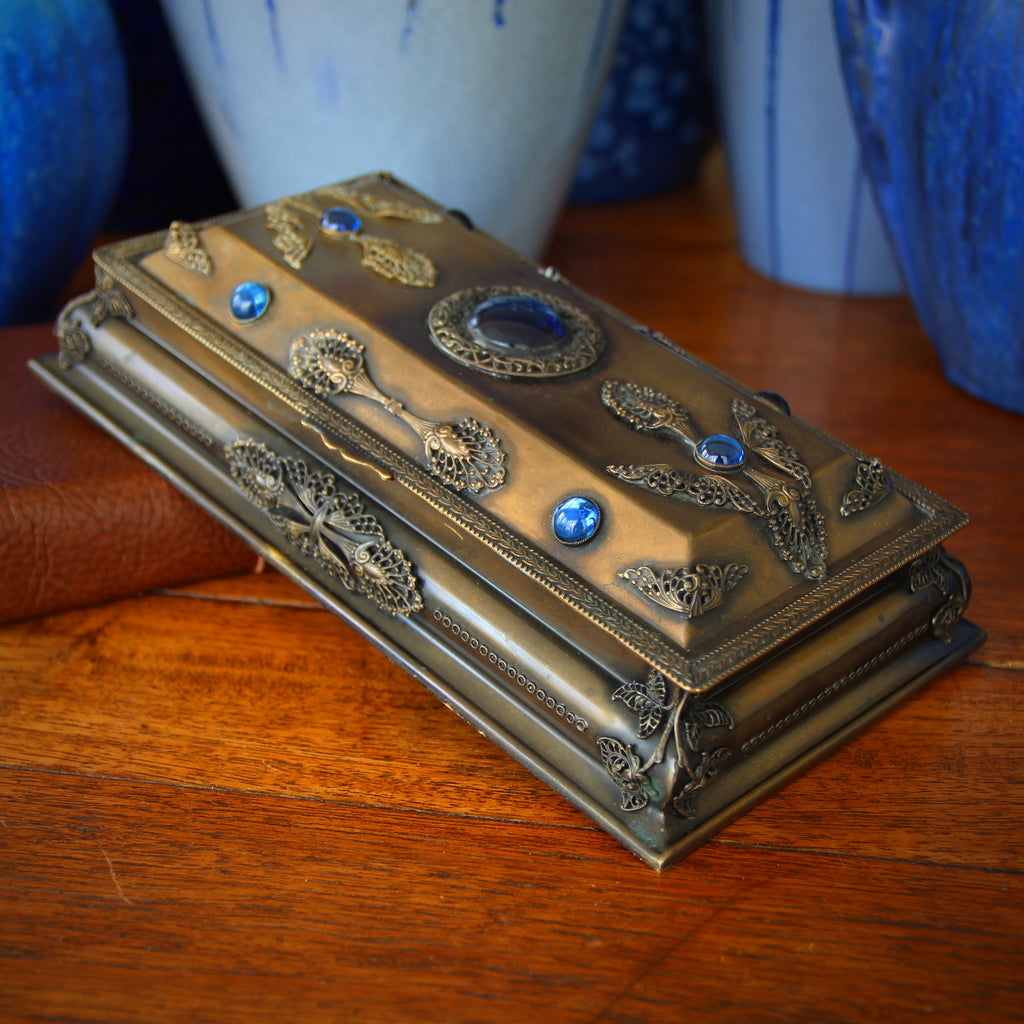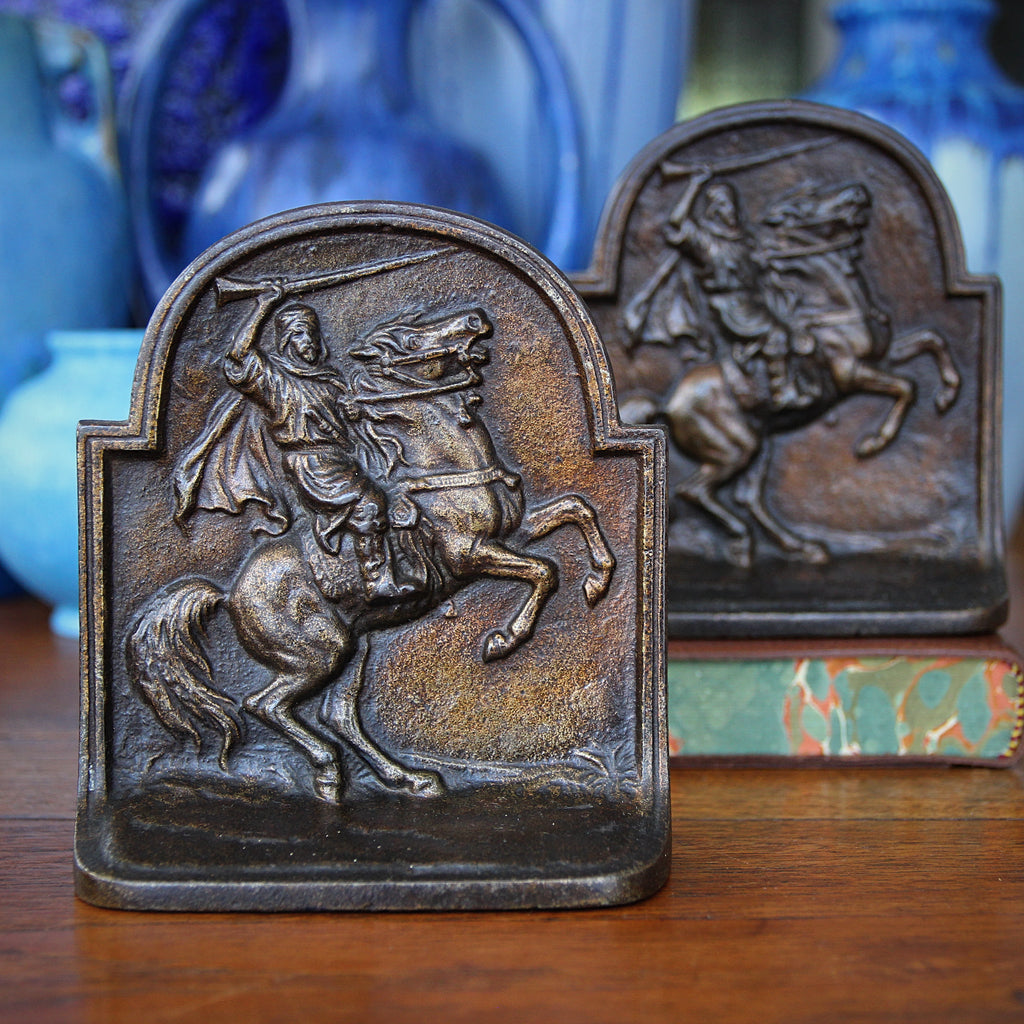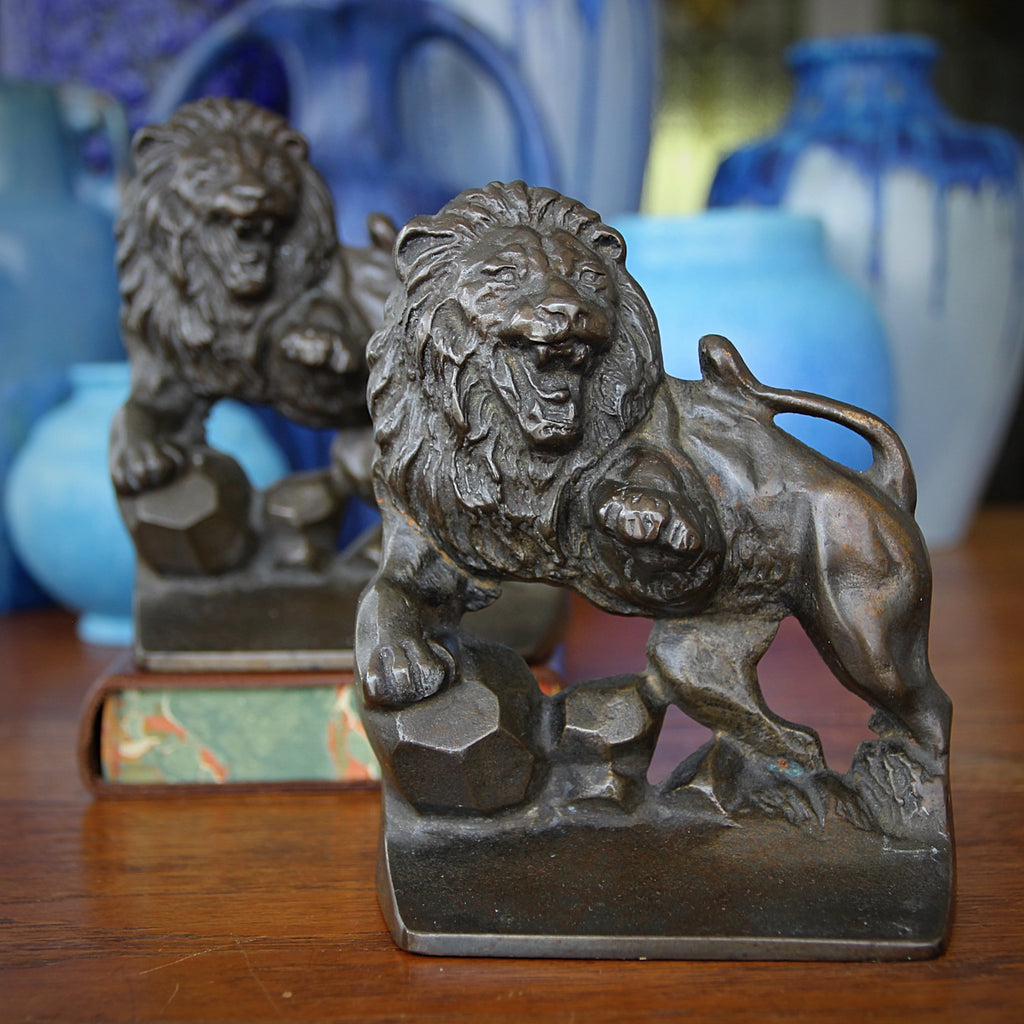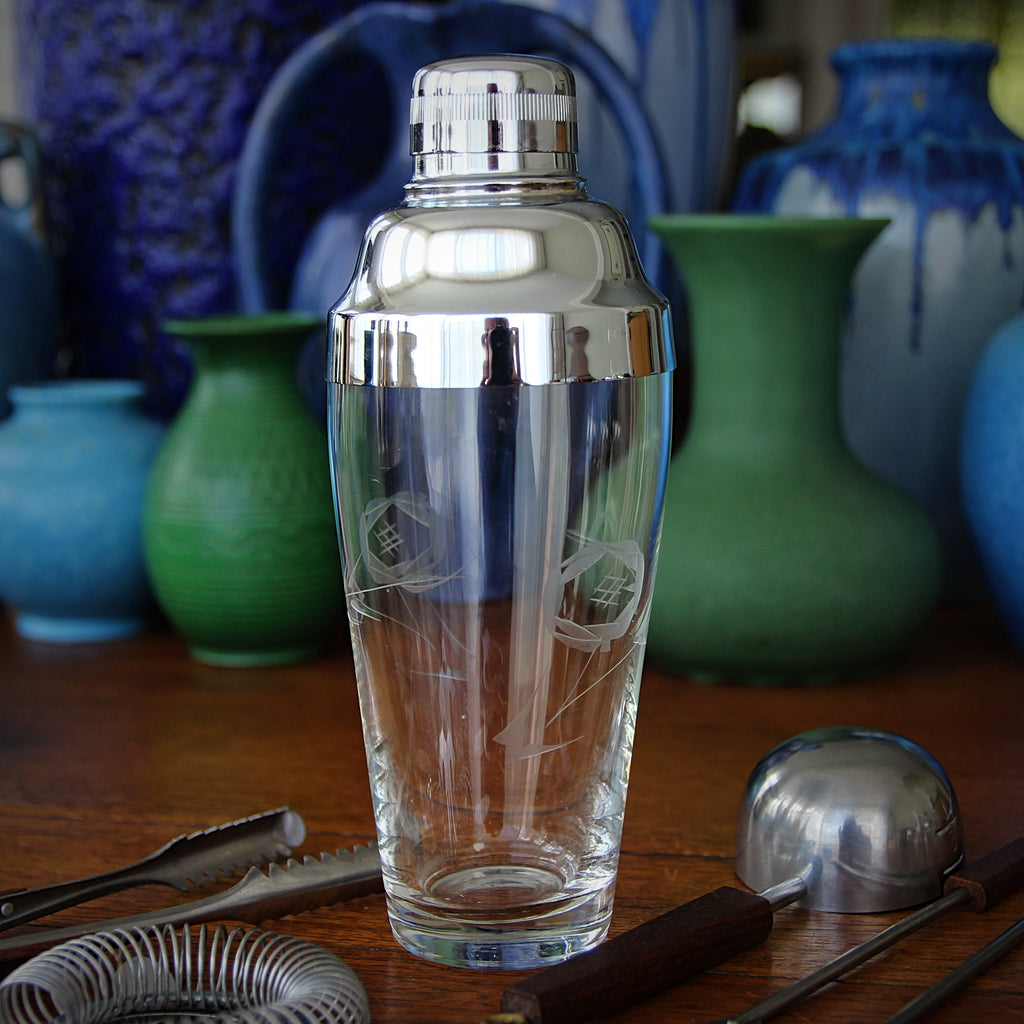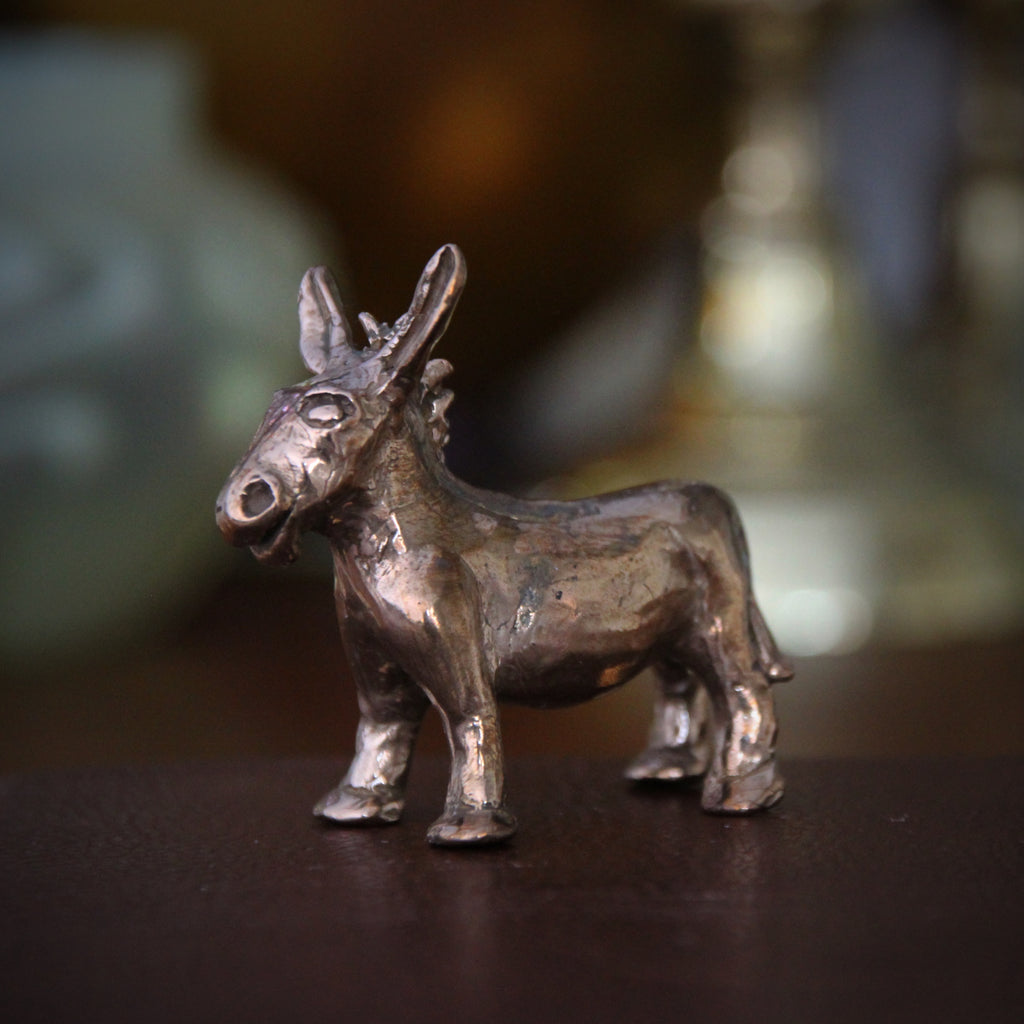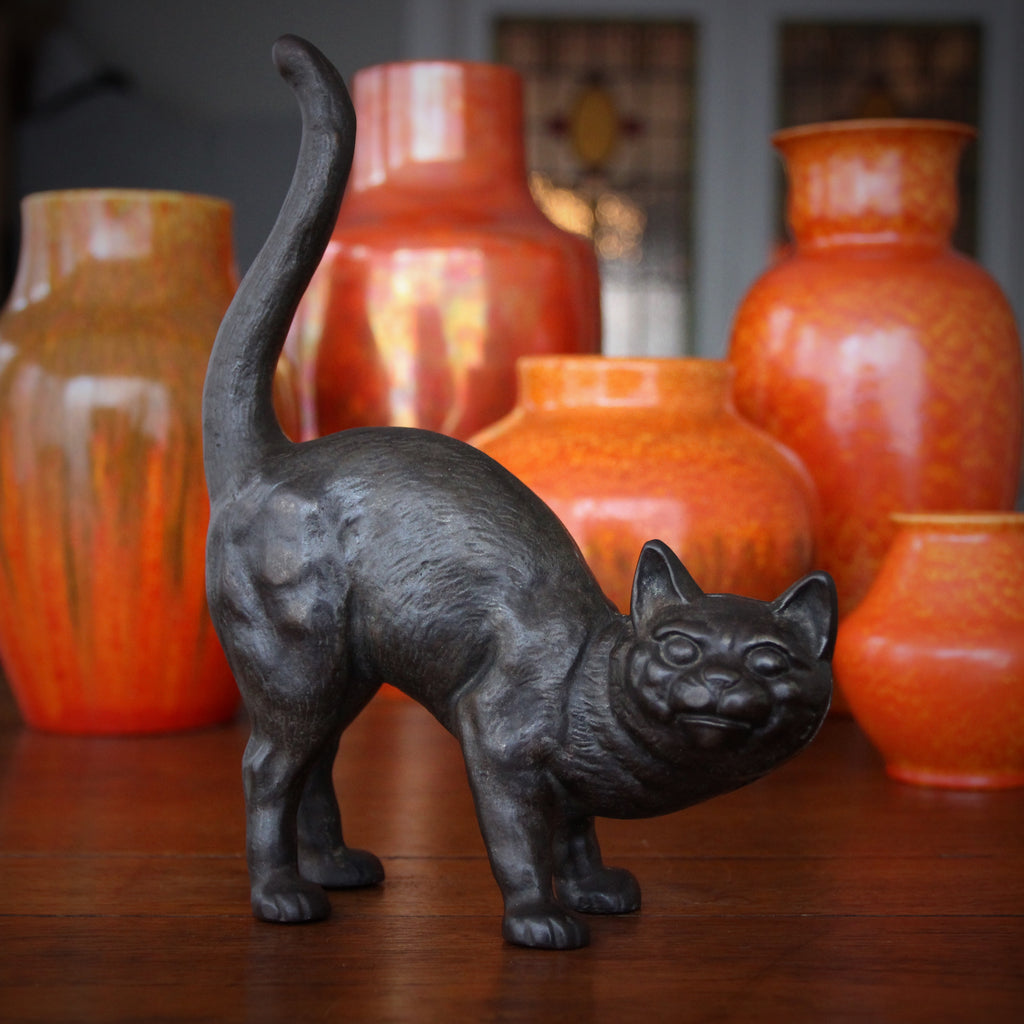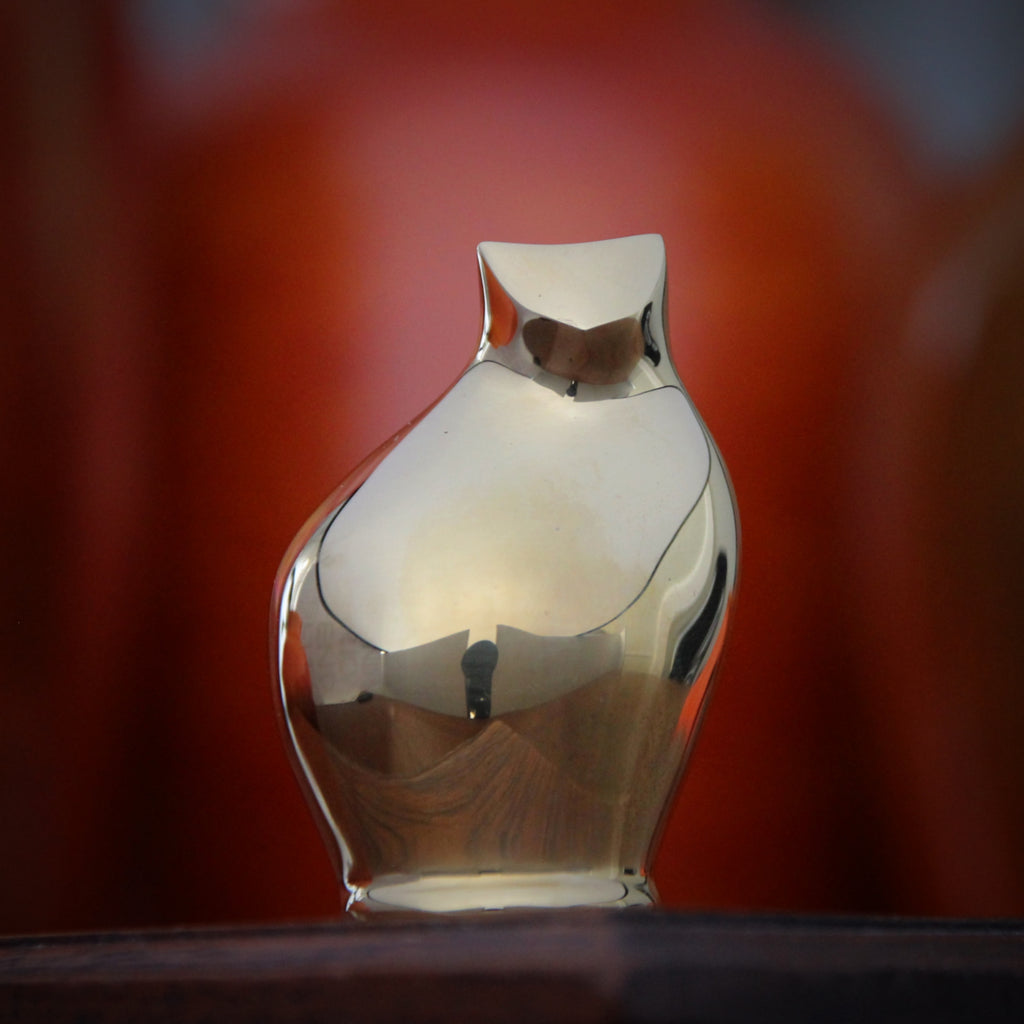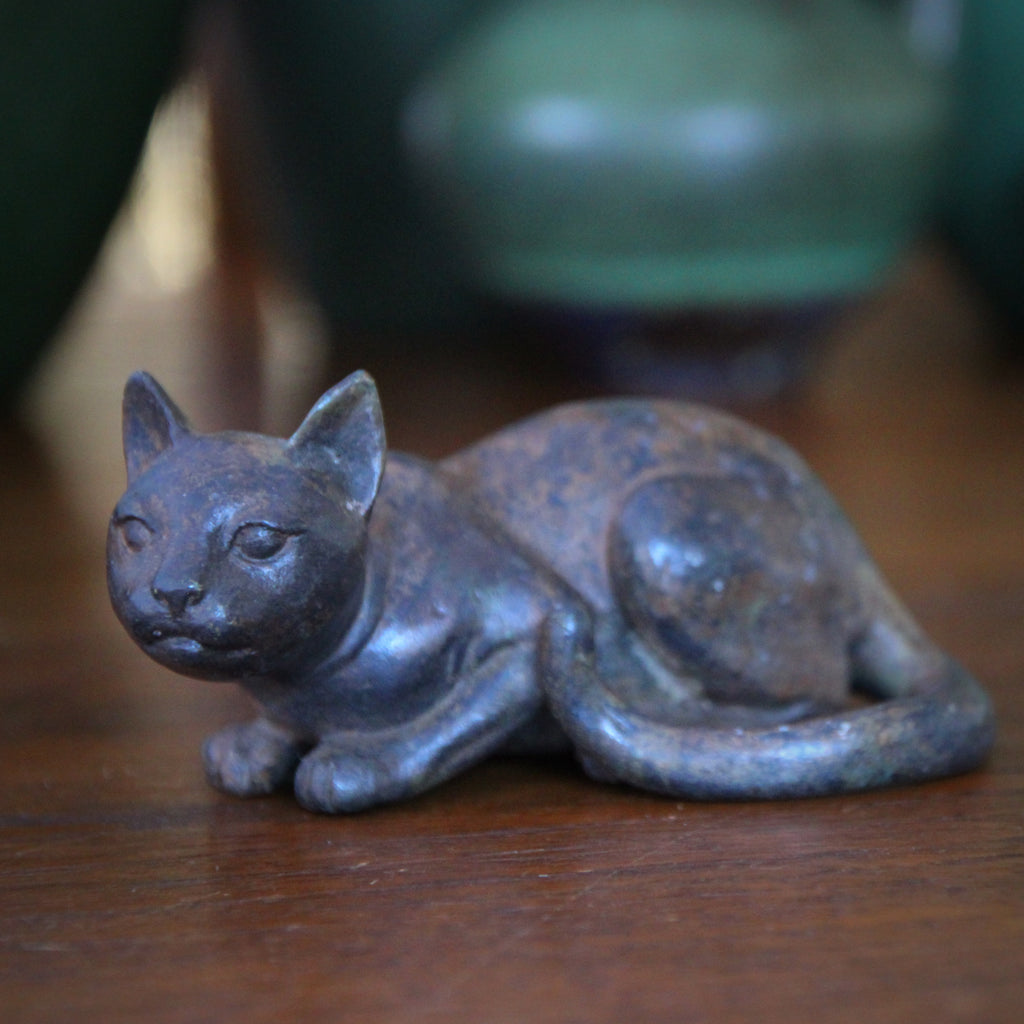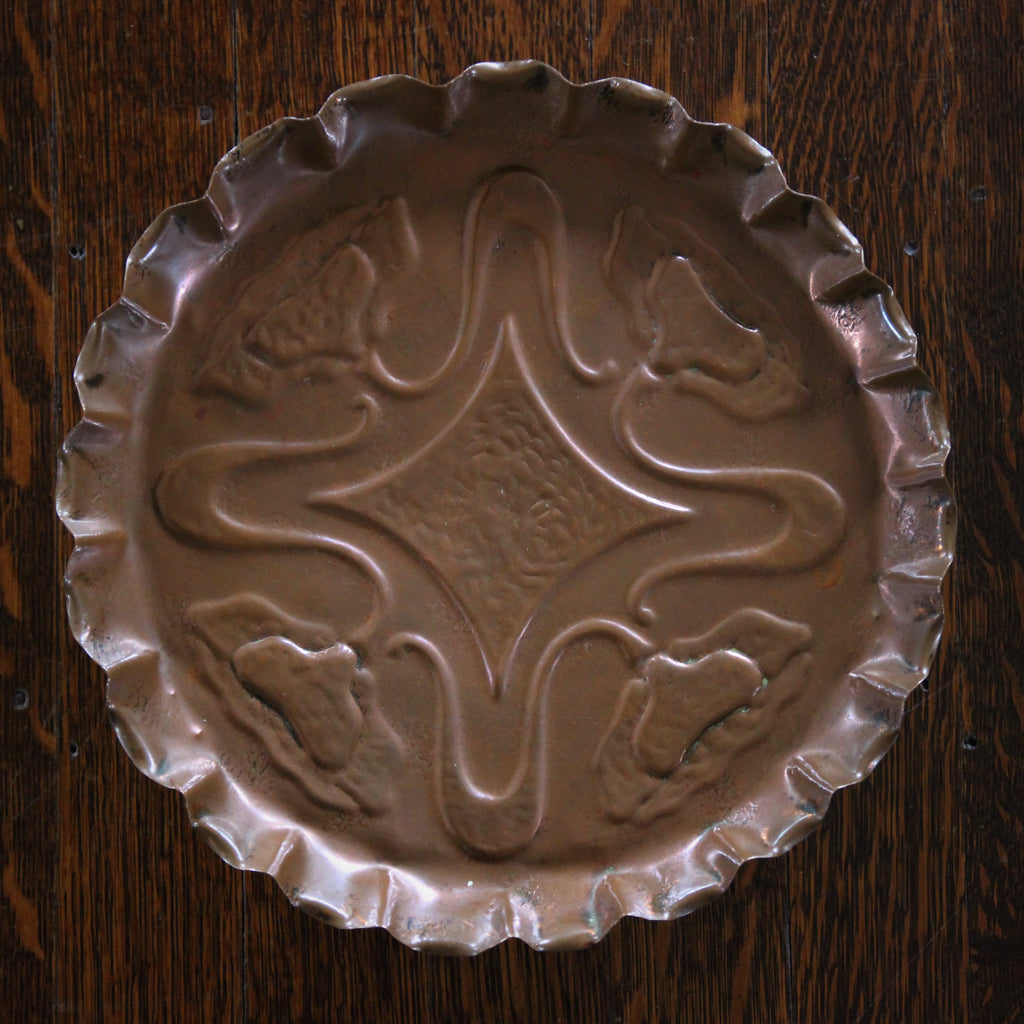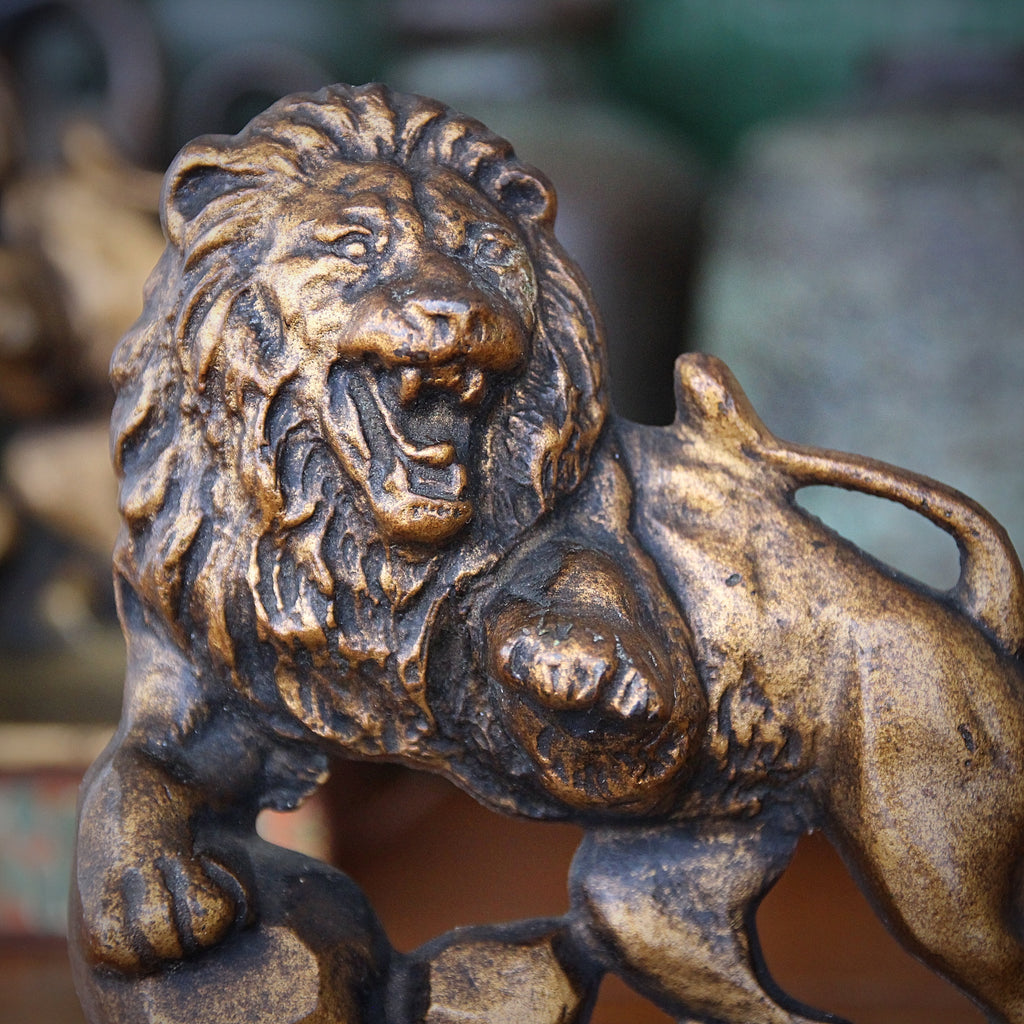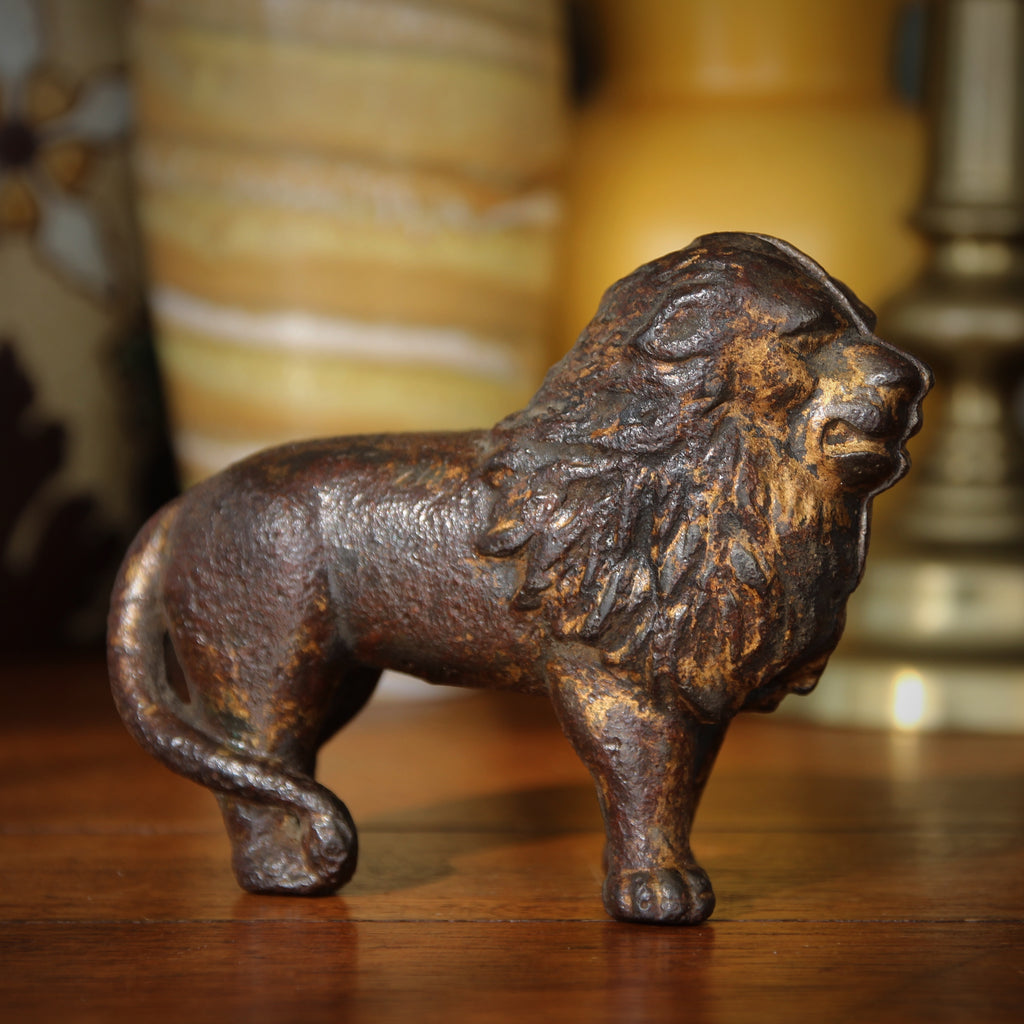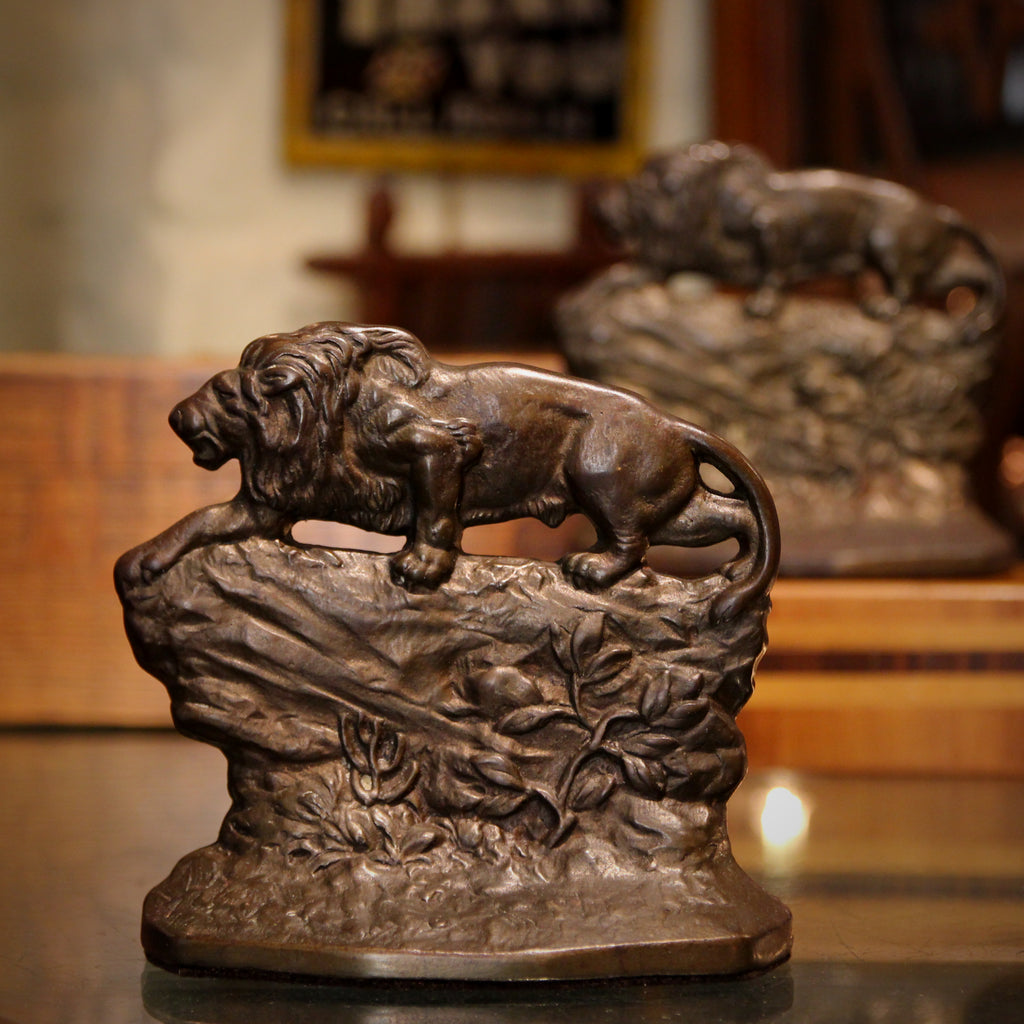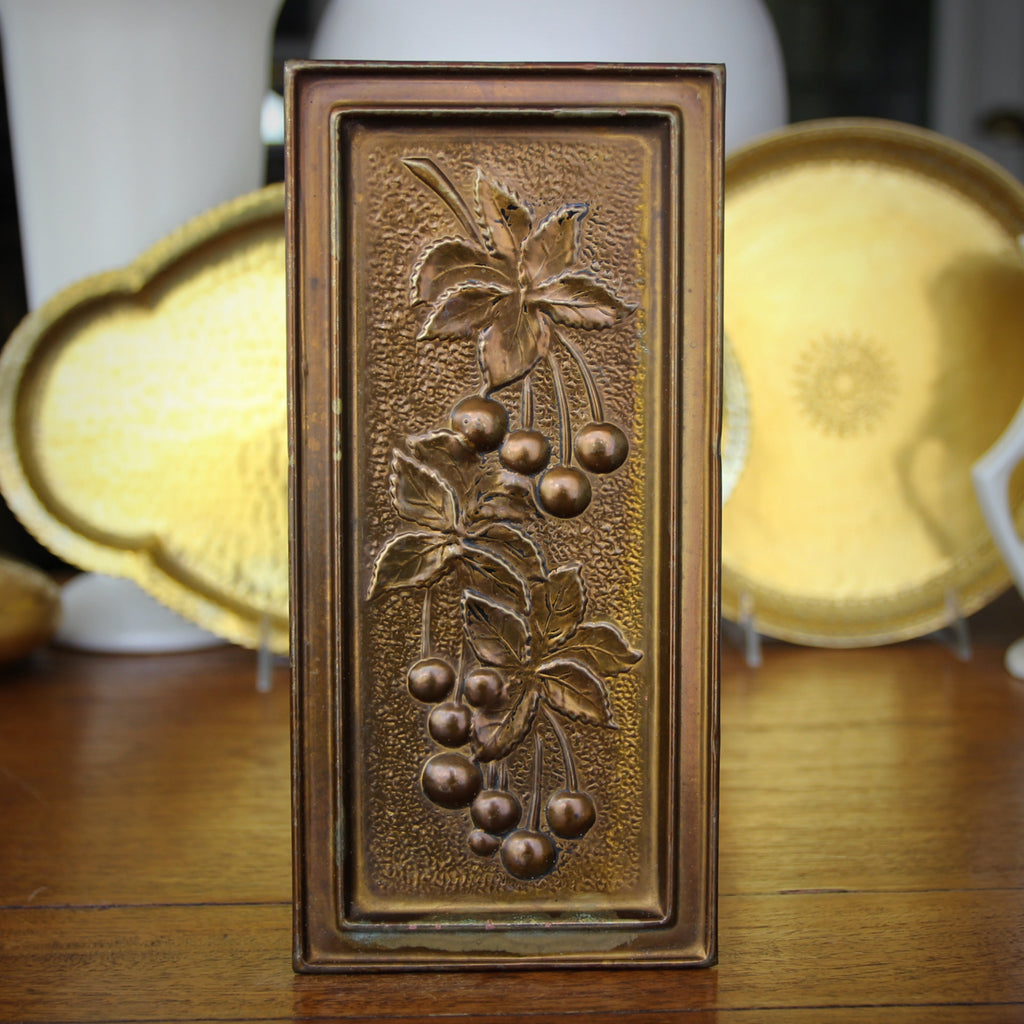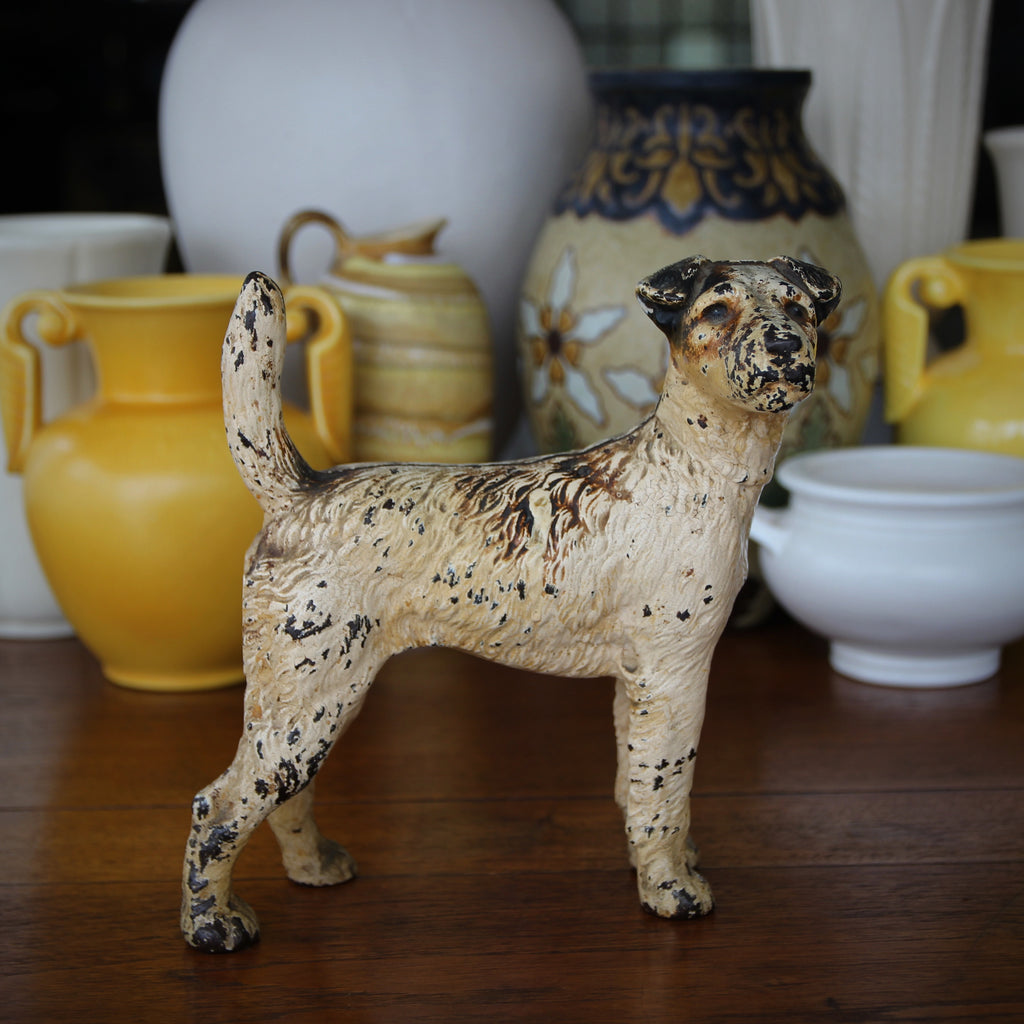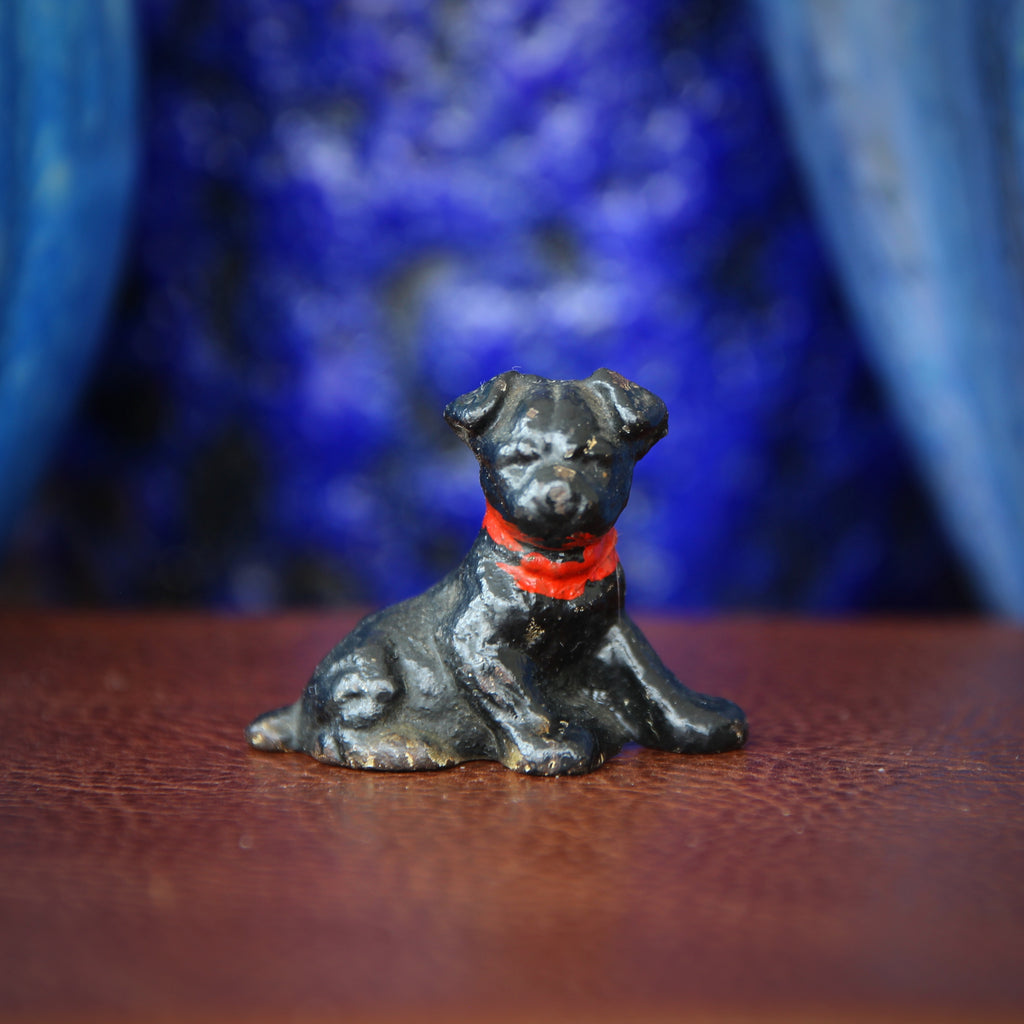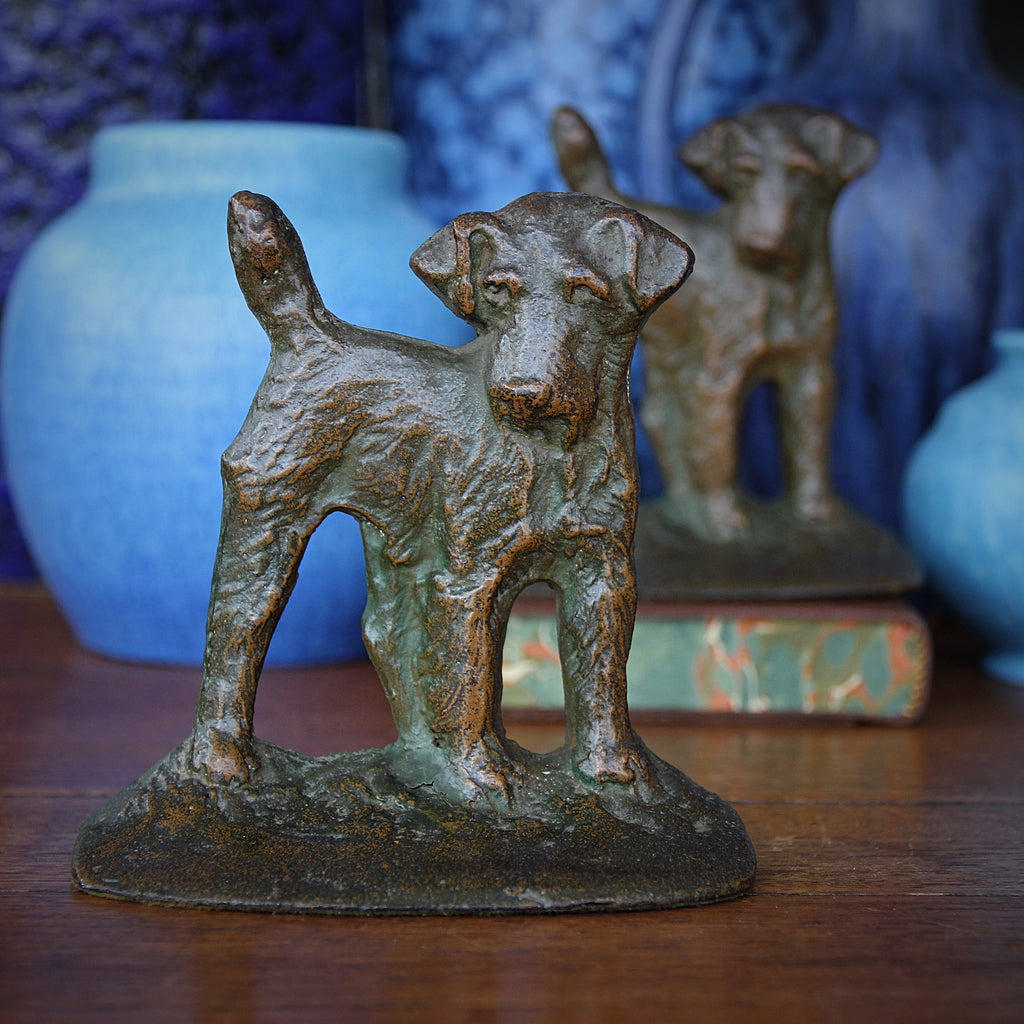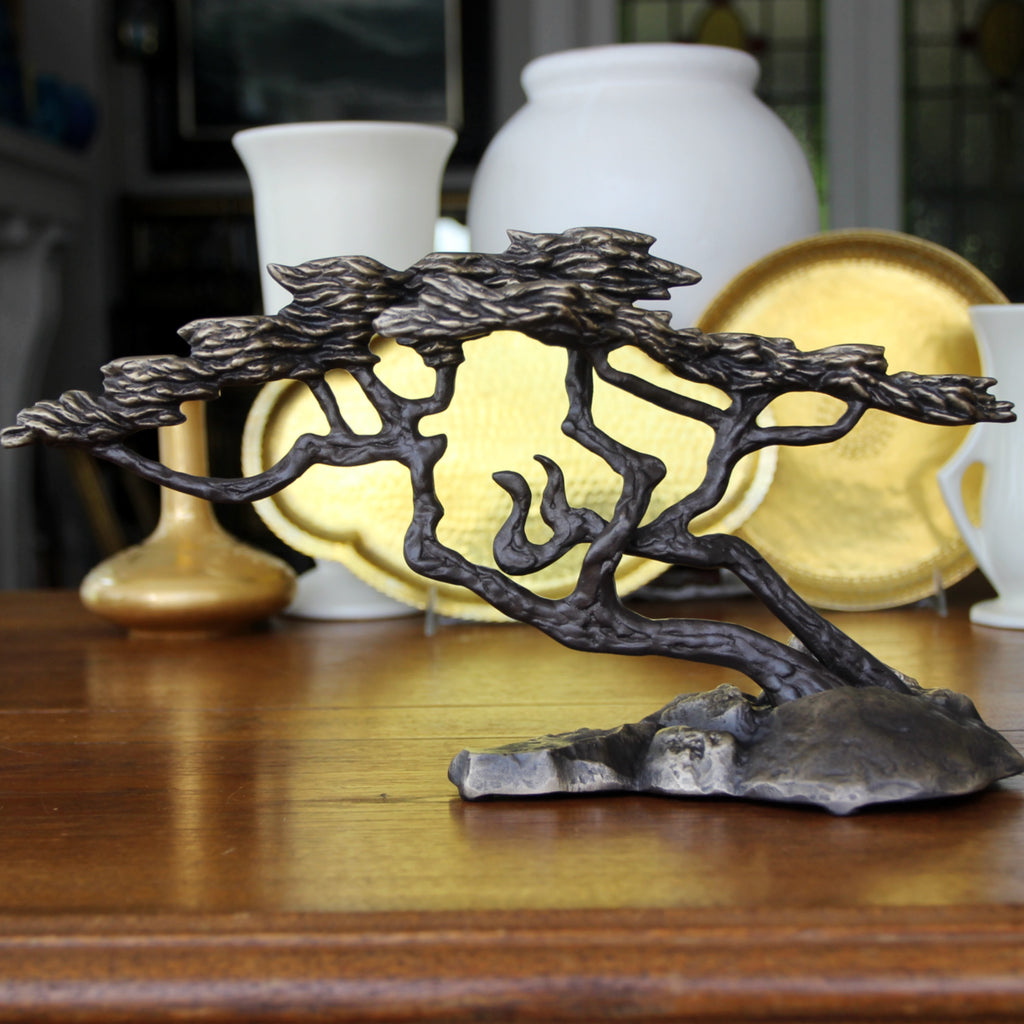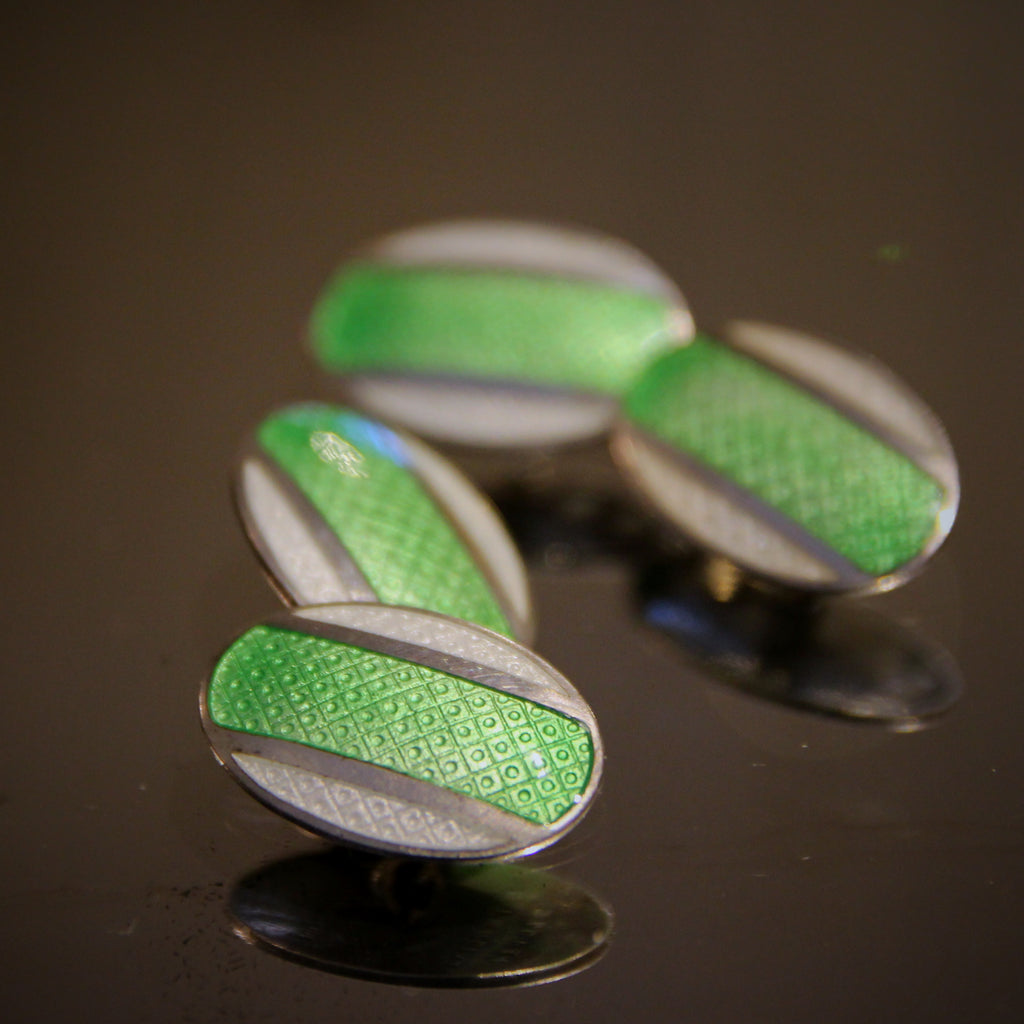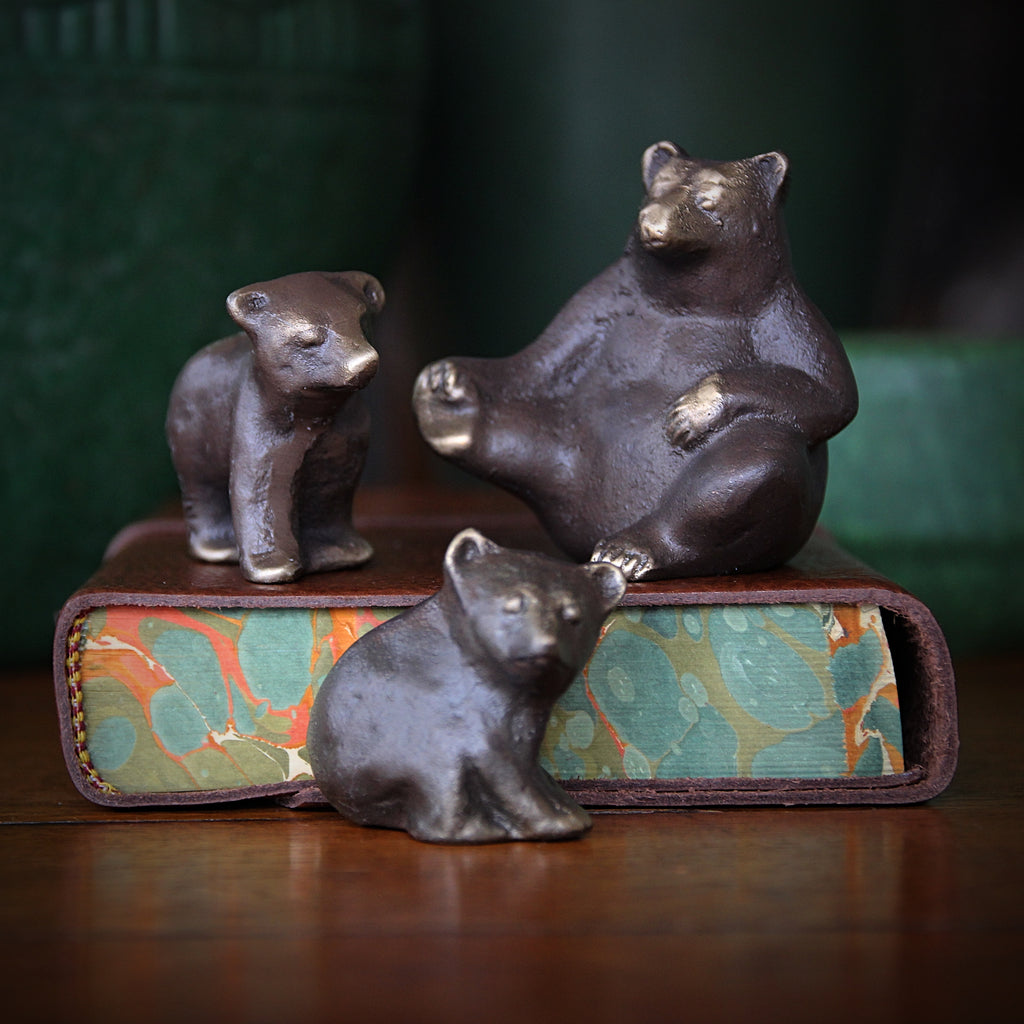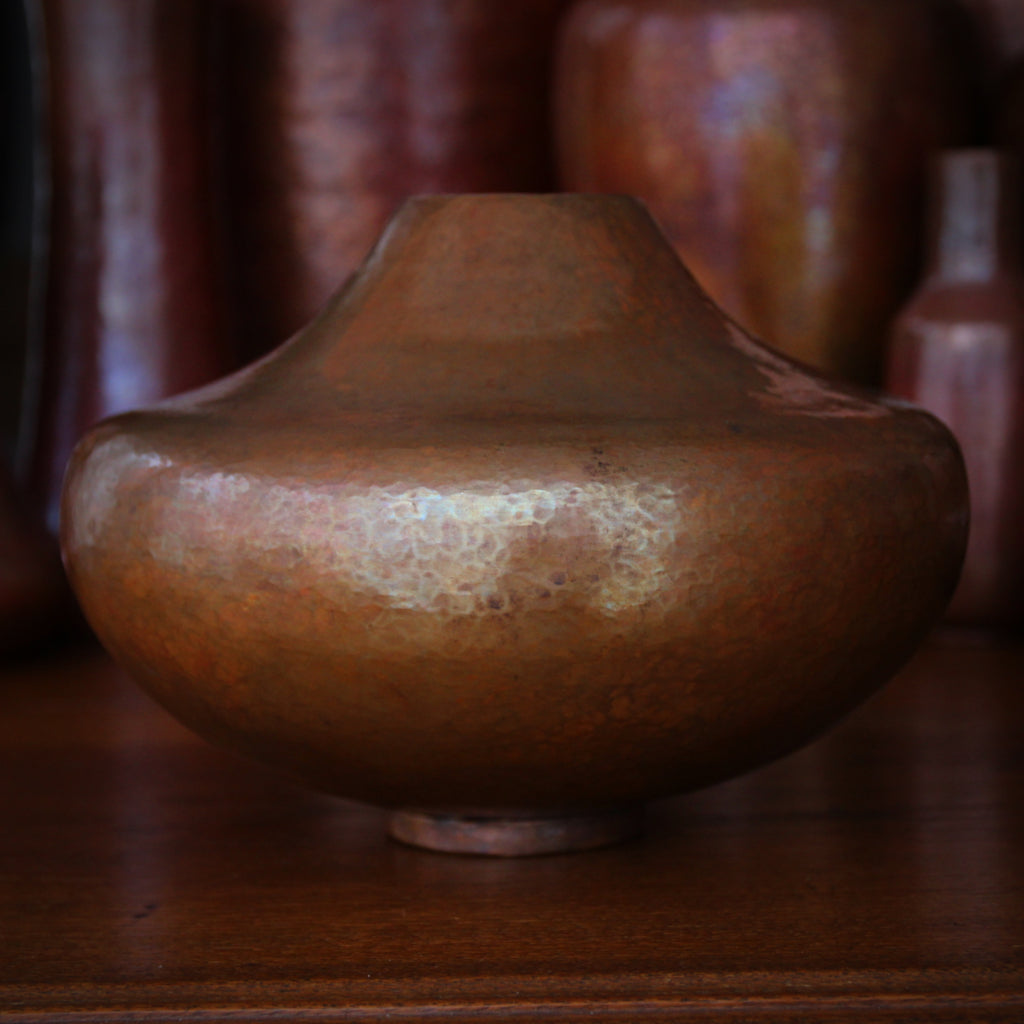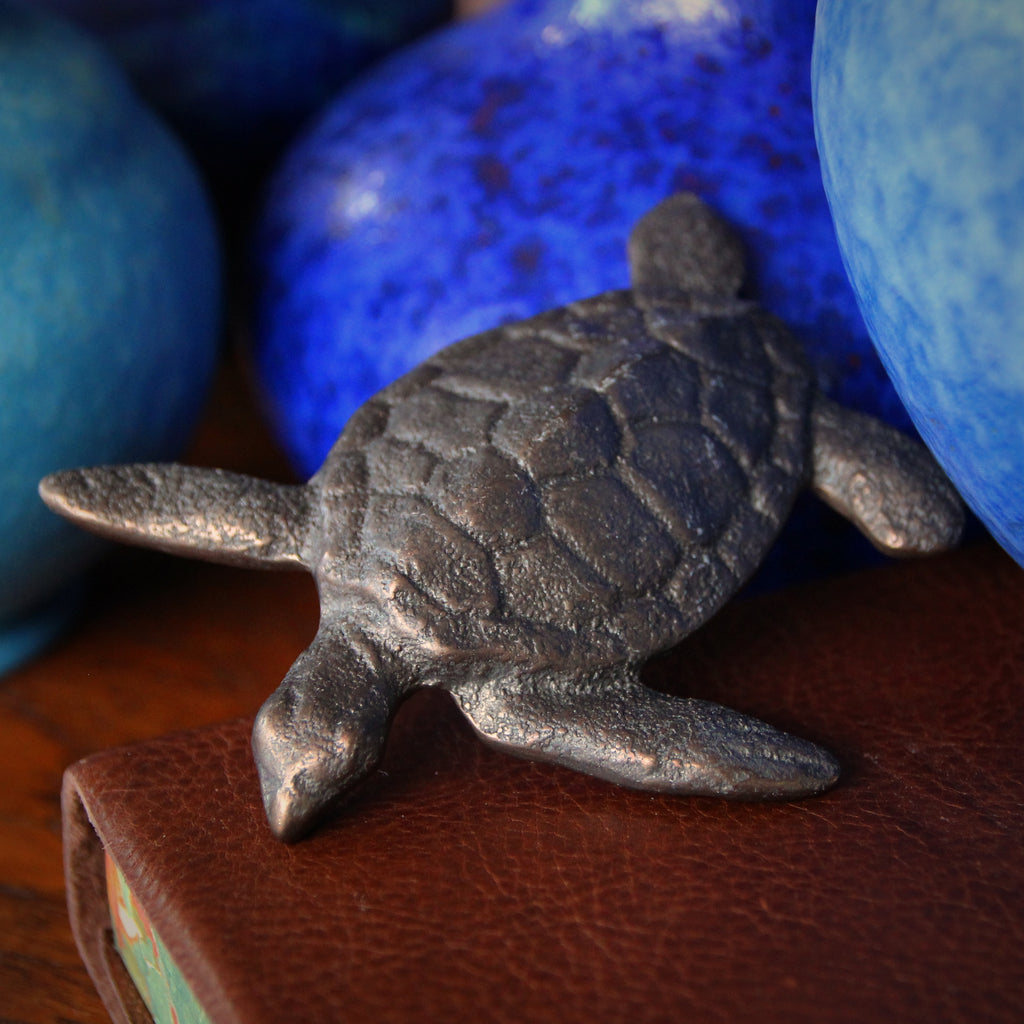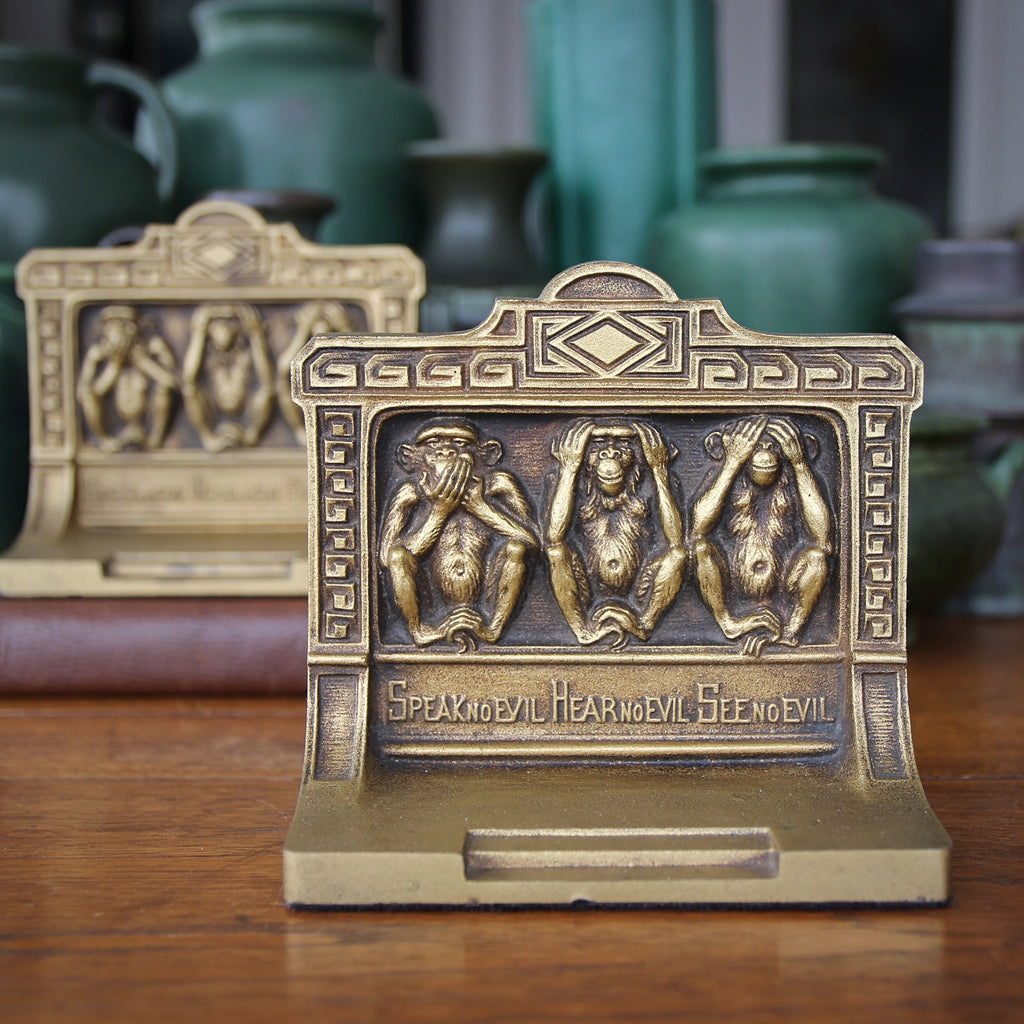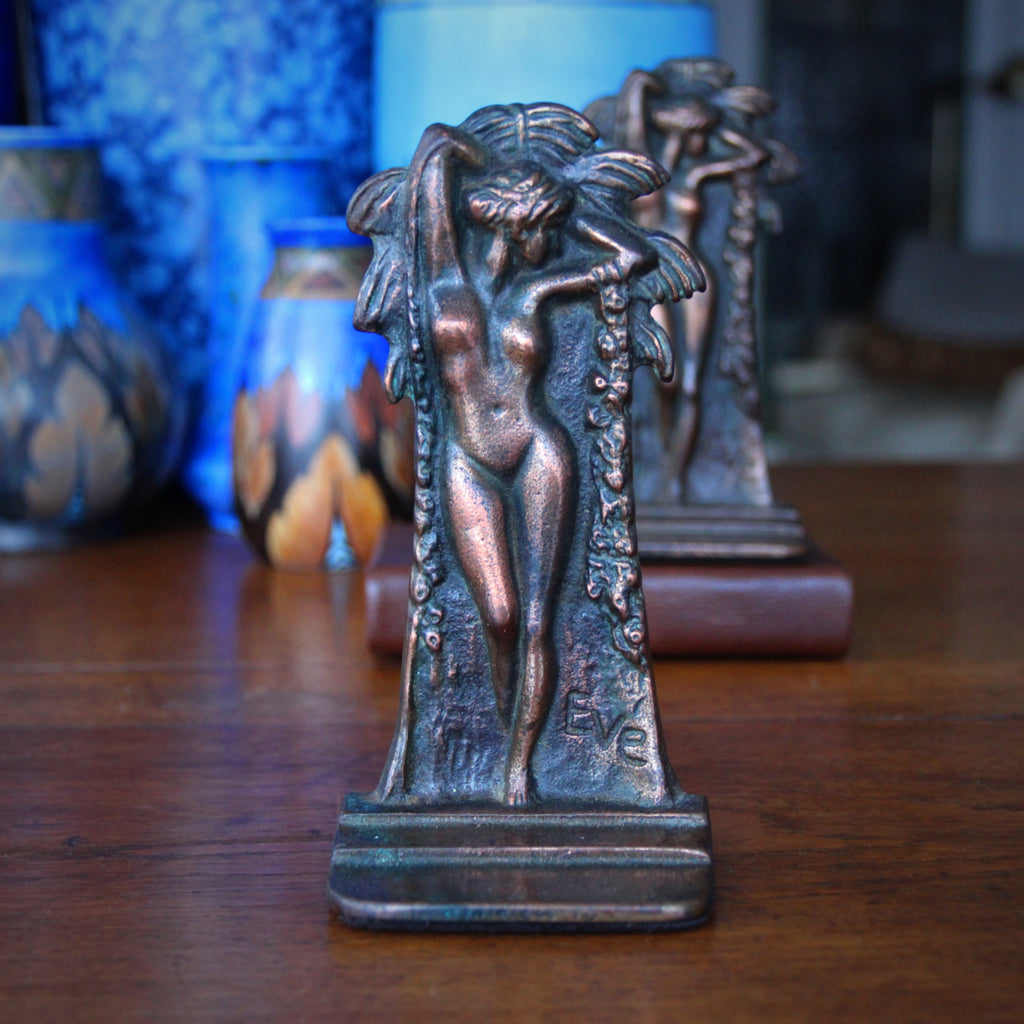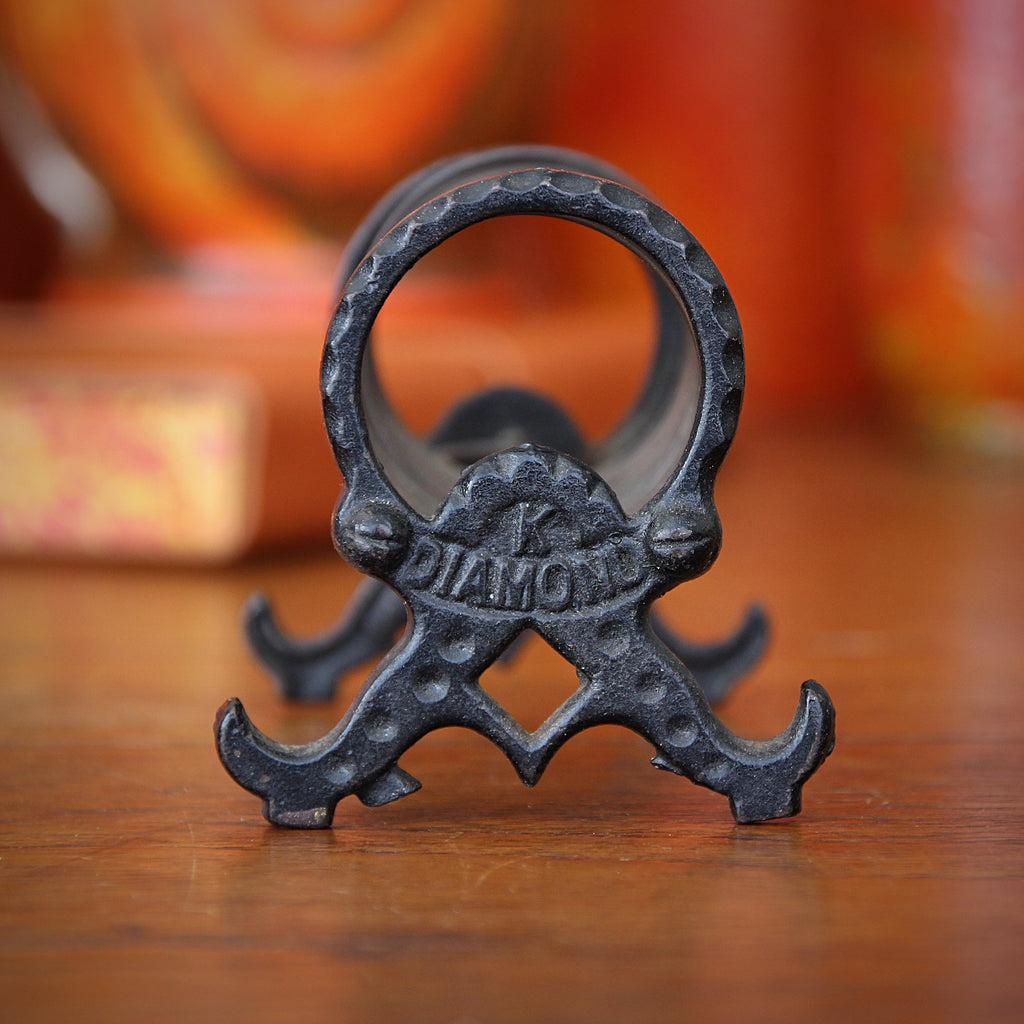JOURNAL — Metalwork RSS
Saint George is amongst the most popular and venerated of saints, named the patron saint of England, Portugal, Catalonia, Bulgaria, Malta, Lebanon, Ethiopia and Brazil. Observe the red "Saint George Cross" on numerous flags and crests of cities and villages for even more regional devotions to the saint. Despite this popularity, his history is a bit fuzzy—and, perhaps, a bit fanciful. We believe that he was of Greek Cappadocian ancestry (located in modern day Turkey), born into a Christian family. He became a Roman soldier under the Emperor Diocletian, eventually elevated to the elite Praetorian Guard. In 303 AD, however, a purge of Christians from the Roman Army (called The Diocletianic Persecution) demanded that George renounce his Christian faith....
Horse Sense - XI
An armored knight steadies his steed, who's chomping at the bit, ready to begin the joust. These bronze-clad bookends are nicely patinated and hand-painted. They were sculpted with dynamic tension; one can practically hear the stomping and snorting of the swaying beast. Made in the Twenties or Thirties in Metuchen, New Jersey, by Marion Bronze.
Horse Sense - X
I love horses. I love sculpture. And I love bookends. Check, check, check. But when it comes to horse racing, I have pretty-mixed feelings. I know that top race horses are treated magnificently. And, yet, injuries and track-side executions are still all-too-common. And for every top-tier race horse, there are hundreds of other horses who live and race at lower-level (perhaps questionable) stables and tracks. Despite these reservations, I think that the bookends, shown above, are straight out of the Winner's Circle. Made of heavy cast iron, they are patinated with a rich, traditional bronze, highlighted with golden bronze bas relief sculpting. The horses (and the horseshoe) fairly pop from the surfaces of these bookends, made by Bradley & Hubbard...
Horse Sense - IX
As a boy, when I raised horses, we were taught an iron clad rule: one should never let his horse graze with a bit in its mouth. I guess we were worried about the animal choking—or, at least, getting grass caught in the metal bar of the bit. I also have been in the practice of not buying very many painted cast iron bookends. I guess most painted bookends seemed tacky to me, and not well-painted. In buying these painted "grazing horse" bookends, I have had to neglect two operating principles in my life (grazing while bridled and painted cast iron). And I couldn't be happier with myself. The cast iron bookends, shown above, depict a horse grazing while he...
Horse Sense - VII
The Prophet Muhammad received his first revelation from the Archangel Gabriel in a cave in 610 AD. In 613 AD, the prophet began his public ministry—preaching his teachings of the new religion, Islam, amongst fellow Arabs. Initially, Islam spread mostly throughout the Arabian Peninsula. After Muhammad's death in 632 AD, Islam spread very quickly. Within 125 years, Islam had spread throughout North Africa, deep into Central Asia, and into parts of Europe. Some of this expansion was achieved by merchant-traders along well-established trade routes. But Islam was also established through Islamic military force—and their vigorous colonizing of foreign peoples. The Ottomans were a powerful Islamic empire based in Anatolia (Turkey). Founded in 1299, the Ottoman Empire grew in strength through...
Horse Sense - VI
Sculptor Cyrus E. Dallin (1861-1944) was born in Springville, Utah. As a child, Cyrus played with local Native American children and developed a deep respect for their culture (and a sympathy for their plight). During his fruitful career, he created a cycle of four Native American sculptural groupings (between 1890 and 1908). The fourth of these sculptures, called Appeal to the Great Spirit, inspired the pair of cast iron bookends shown above, made in the Twenties or Thirties. At the age of 19, Dallin left Utah for Boston where he apprenticed under sculptor T.H. Bartlett. In Boston, he befriended sculptor Augustus St. Gaudens and painter John Singer Sargent. In time, Dallin travelled to Paris to study at the Académie Julian....
Horse Sense - V
While I recoil at the thought of killing a majestic buffalo with a spear—and I lament the near extinction of the species in America—I do admire the artistry manifested in this pair of cast iron "Bison Hunt" bookends from the Twenties or Thirties. The bas relief sculpting captures the frenetic energy of the hunt—and quite a lot of detail, too. See the dust rising from the hard-packed plain, as scrub bush disappear behind the sooty haze. And the artful sculpting is appreciable thanks to the crisp casting. Lastly, the bookends are finished with a dark bronze patina—while soft, golden highlights peek-out here and there.
Horse Sense - III
Sculptor James Earle Fraser (1876-1953) was born in Winona, Minnesota. Even as a boy, he was moved by the plight of Native Americans who were being pushed further West or confined to reservations. He studied at the Art Institute of Chicago, followed by studies in Paris, at the École des Beaux Arts and the Académie Julian.
Shown above, a pair of cast iron bookends based on Fraser's famous sculpture, The End of the Trail. His first model was made in 1894, while Fraser was still a teenager. He made several copies, in varying sizes, including one which was displayed at the San Francisco Panama-Pacific International Exposition in 1915. The exhibition helped make the sculpture very famous.
Horse Sense - II
The theme of "The Horse Tamer" has long been a popular subject in sculpture—from Antiquity to the Enlightenment. Greek sculptors portrayed human trainers subduing their equine charges—which the Romans later copied for their own city. Amongst the most famous Roman Horse Tamers are a pair which flank an obelisk and fountain on Rome's Quirinal Hill. The pair—called Dioscuri, the twin half-brothers Castor & Pollux—were copied in the Fourth Century from Ancient Greek predecessors. In 1792, Napoleon considered removing them to Paris, however, they proved too large and difficult to transport. Also in Rome, another pair of Dioscuri, standing atop the dramatic ramp which leads to Michelangelo's Piazza del Campodoglio.
Horse Sense - I
When I was a kid, I rode and showed horses. I belonged to one of the (three) 4-H horsemanship chapters on the island of Kauai: The Comancheros. I was crazy about horses. I read all the James Herriot books and saw myself becoming a large animal vet. Caring for a horse was a daily, all-consuming task. I had to head-out to the pasture every day after school—trucking water, food, and grooming equipment in the station wagon—which left no time for any other extracurricular pursuits. But I learned about carrying serious responsibility and committing to care for something which required absolute daily attention. I also experienced the indescribable bond that a horse and rider can form. I can still recall the...
Birds of a Feather - X
Let's end our pre-Spring flight with this little guy—a roly-poly baby bird. He is cast in brass and finished with a verdigris bronze patina. He may not be read to take flight. (He may never be able to take flight!) But he will look ever-so-cute sitting in-place, waiting for that hopeful day.
Birds of a Feather - VIII
This pair of gentle sparrows—one tail-up, one tail-down—are sculpted with meticulous detail and convey the watchful energy of such a vulnerable creature. They bear a naturalistic, not Impressionistic, resemblance to the real birds and would make a lovely addition to that perfect little spot in your home.
Birds of a Feather - VI
Our fluffy little bird—puffed-up against the cold—looks like he's ready for Spring. He's cast in brass, finished with a verdigris bronze patina.
Birds of a Feather - V
Rise and Shine! This brassy British bantam is bellowing with bold abandon! He was cast in Edwardian England, circa 1910. Let him happily greet the dawn from your desk, bookshelf or bedside table.
Birds of a Feather - IV
Swan Lake is my favorite ballet. And this is not because of the storyline or the dancing. It's because of the sublime music by Tchaikovsky. The music is ravishing and poignant and devastating. It goes right to my heart. How could one not be moved (elevated and dashed) by this incredible 1876 score?
This little bronze swan, cast in Canada, will seemingly glide across your desk, bookshelf or windowsill.
Birds of a Feather - III
In times past, children would be found playing with small sculpted figurines—perhaps soldiers, animals or automobiles. Such animals might be those varieties found on a farm, at a circus, in a zoo or on Noah's Ark. Here we have a pair of British tin penguins—dressed in their fancy, hand-painted black and white "tuxedos." They probably originated from a collection of zoo animals in the Twenties or Thirties. Playful penguins have always captivated humans. Their rocking gait, formal "attire" and devoted nesting practices have made them ripe for anthropomorphism. Indeed, these little tin birds have loads of personality—despite the simplicity of their design.
Birds of a Feather - I
Spring is in the air. We've been teased with fleeting moments of warmth—only to be blanketed with snow and ice the next day. But the birds are aflutter, zooming through my backyard. Let's anticipate the Spring with a selection of feathered friends, all now in-stock at LEO Design.
Shown above, a brass tea bell—its handle a chickadee, alighted upon a leafy twig. It's a handsome bell, whether employed at-table, sitting upon a pile of coffee table books, or standing sentry on your windowsill.
The Show Must Go On!
Day two. I switched-out yesterday's leather boots for sneakers. And I packed my sweatshirt and sweatpants to change for the 4:00 pm pack-up. Alas, the weather—which had been snowing and slushy all weekend—has turned worse. It's sleeting—horizontally. Loading my station wagon will not be a fun thing.
But I learned a lot and enjoyed the experience. I'll probably come back next year.
Shown above, a pair of English Art Deco sterling silver cufflinks from the Twenties or Thirties. Bold stripes of lime green and white enameling lie-over a textural "waffled" guilloche. They are sporty, fresh, and perfect for the Spring and Summer. (Picture them against a tanned wrist!)
St. Valentine's Day
Valentinus was a Third Century Roman priest—possibly a bishop—who ministered to the persecuted Christians of Rome. He was arrested by Roman Emperor, Claudius II, who came to like the charming priest. However, when Valentinus pressed the emperor to become a Christian, Claudius laid-down an ultimatum: either Valentinus would renounce Christ or he would be beaten and beheaded. Valentinus met his martyrdom around the year 270—on the Via Flaminia. His relics were kept in the Church and Catacombs of San Valentino in Rome which became a popular Medieval pilgrimage destination. In the 13th Century, he was moved to Santa Prassede, then to the Basilica of Santa Maria in Cosmedin. More of his relics can be found in Madrid, Dublin, Prague, Lesbos,...
Finally February!
Boy! Didn't January 2025 feel six months long! But we've made it to February, and she brings with her a birthstone, the regal Amethyst.
"In the Olde Days," Amethysts were rare, indeed. They were considered one of the "Cardinal Gemstones"—alongside diamonds, rubies, emeralds and sapphires. Further elevating their status was their association with the monarchy—as the precious (and costly) color purple has long been linked to the royalty. Alas, new and large amethyst mines were discovered in Brazil in the Nineteenth Century, causing the global price of amethysts to fall. Though less-precious today than they once were, they remain no less beautiful—or regal. And they are the birthstone to those born in February.
Feeling Blue - VIII
Agate stones are popular throughout Britain—no more so than in Scotland. The natural "layering"—irregular stripes of stratification—build-up over centuries of time, heat and pressure. Once polished, no two pieces are ever exactly the same. Furthermore, for centuries gemologists have been dying agate to create different, pleasing color combinations.
The English brooch, shown above, was made in London. The sterling silver mounting is hallmarked London 1987. While that might not seem very old, rest assured that the agate stone itself is millions of years old (and looking better than ever).
Feeling Blue - VI
Feeling blue? Perhaps a joyful "blue rainbow" will perk-up your day?
These English Art Deco cufflinks, made in London in the Thirties. are decorated with a two-tone blue rainbow. Or, perhaps, it's a smile? The enameling decorates (half of) the faces of these goldtone cufflinks.
Winter White - XII
Let's end our procession of Winter White offerings with this handsome set of six Edwardian English shirt buttons in their original presentation box. Recall that, earlier this week, we discussed the history of buttons—and how they were originally used as much to exhibit status, rank and wealth as they were used to fasten-closed a garment. This set of buttons is certainly luxe (though they retain a good measure of appropriate Edwardian restraint). A seed pearl is set within the center of the polished, mother-of-pearl faces. A "sprocketed" ring of green enameling encircles the bezel—perhaps it's a hint of the Springtime to come. The buttons' settings, as well as their fastening rings, are made of silver. A set of fancy buttons,...
Winter White - IX
Mother-of-Pearl has been a classic button material for centuries—whether those buttons were sewn-on or whether they consisted of a separate, unattached fastener. In the early days, buttons were primarily decorative—utilized to exhibit wealth, rank or status. In fact, the trend of using buttons to express affluence lead some Puritanical governments to impose a tax upon them—to discourage such conspicuous displays of riches. The material of buttons—which replaced ties and clasps—ran the gamut from the common to the exquisite, depending upon the pocketbook of the owner. Wood and bone were the most affordable materials. Pewter, horn and (later) brass were a little more expensive. And precious metals, fine enameling and gemstones were within reach of only the wealthiest. By the...
Winter White - VII
One of Winter's loveliest sights is a field of crisp, white snow, juxtaposed against a vibrant blue sky. These Art Deco cufflinks, from the Thirties, feature these two beautiful colorations. Guilloché is the French word to describe the delicate, engine-turned engraving found on metal—or the patterns printed on paper from such engraved metal plates. Engine-turning is the process of using a mechanical device. one version is called a rose machine, to deliver an intricate and precise pattern—often repetitive swirls, zig-zags or waves—upon the metal. The rose machine has a rotating lathe upon which the material to be engraved (in this case, a cufflink) is mounted at the end. This lathe rotates and rocks rhythmically (and precisely) while the cutting tool...
Winter White - V
Laguiole knives have been made in the French village of Laguiole since 1828. Nearly 200 years later, Forge de Laguiole is the only knife-maker operating in Laguiole (though many have tried to appropriate the name, likeness and trademarks of the brand—as far away as China). Originally used by local shepherds and other working people, these knives have been refined over the company's first several decades, resulting in the classic design we see today: a sinuous curve, beautiful finishing, marked with the trademark bee. At the time of Laguiole's founding, folding pocket knives were still a novelty. But is it a fly or a bee? The company says it's a bee. In Laguiole's early days, each knife-making artisan would "sign" his...
Winter White - II
The clean, white faces of these handsome Art Deco sterling cufflinks, are reminiscent of a field of pristine snow—with the gentle and precise "ripple" of guilloché work perceptible just beneath the enameled service. A "bezel" of Danish blue encircles the snowy field. These handsome cufflinks were made in the Twenties. As beautiful as they are now—during the Winter—imagine how striking they will be fastening a crisp shirt cuff, proximate to a summer-tanned wrist.
Il Condottiero
Bartolomeo Colleoni (1400-1475) was the Captain-General of Venice in the third-quarter of the Fifteenth Century. He was a "Condottiero"—a term which (in Medieval times) meant mercenary leader, but later (in the Renaissance, during which time Colleoni lived) it became an honorific for any great and famous military leader. He was born to a noble family in Solza (near Bergamo, then part of the Duchy of Milan) and trained as a soldier. He spent much of his life serving the Republic of Venice. But he also served various Dukes of Milan—at times Venice's bitter rival.
A great tactician, Colleoni took-back for Venice territories which previously had been stolen from them by Milan.
Pensive Putti
Christmas Day has passed. So has Boxing Day. So why are these putti so pensive? Perhaps they're wondering if their lovingly-sent gifts made it on time. Help these angels relax; tell the angels in your life that their gifts have arrived—and that you love them (if you do). This pair of putti are a matching set of bronze-clad bookends, made in the Twenties. They are well-sculpted and finished with a golden bronze patina. Bookends such as these were crafted in the first-third of the Twentieth Century, intended to give the appearance of solid bronze without the high price. Think of them as "a poor man's bronze." Such bronze-clad items would be sold in gift shops, jewelry stores, or in art museums (where...
Playful Pup
How wonderful to wake-up, Christmas Morning, to a playful little puppy waiting under the tree. While I would strongly discourage giving a real puppy as a gift (unless it were properly planned), I do endorse this little silver-plated music box which plays Brahm's Lullaby (published in 1868). Wind him up and enjoy Brahm's most famous tune.
Hearth and Home
Since ancient times, the hearth has been an important symbol of sustenance, protection and familial affection. Especially (but not only) in cold climates, most early, rustic dwellings would be centered-around the fireplace. It was the center of cooking, light and heat for the entire household. When not sleeping, family members often would be found not far from the hearthside. Even today—even when it's not cold—people find themselves drawn to a fire pit, bonfire or barbecue grill.
Two Weeks 'til Hanukkah!
It's two weeks until Hanukkah—the Jewish Festival of Lights.
The dates for Hanukkah follow the Hebrew Calendar—beginning on the 25th day of Kislev—and the holiday can fall anywhere from late November to late December on the Gregorian (modern day) Calendar. This year, Hanukkah will begin at sundown on Christmas Day. This coincidence occurs infrequently, most recently in 2005. Before that, Hanukkah coincided with Christmas Day in 1959, 1921, and 1910. The next time that Hanukkah will begin on Christmas Day will be in 2035.
The Hanukkah menorah, shown above, was cast in bronze in the form of a windswept cypress tree.
Welcome, December
Welcome, December, and your birthstone, the Turquoise. The sublime blue-green stone has been mined and used decoratively for thousands of years although the modern(ish) name “Turquoise” dates-back only to the 1600’s—from the French word “Turques” (after the “Turks” who first brought the stone to Europe from Persia). Some of the oldest turquoise mining occurred in Persia where the domes of palaces were clad in the beautiful mineral symbolizing “Heaven on Earth.” Turquoise was also found in the Southwest Sinai Peninsula (c. 3,000 BC) where the Egyptians mined and used it—quite famously on the golden mask of King Tutankhamen. In the New World, turquoise has been mined (and used) by the Aztecs in Mexico and Indigenous Americans in the Southwest. Turquoise was considered...
Giving Thanks
I have spent my adult life as a merchant. Thanksgiving has always been a milestone day in my professional calendar. Despite the busy-ness of the season—the preparation and the crazy days to come—I love this quiet day to rest and reflect on everything for which I am grateful: my friends and family, my health, my customers and my faith.
Shown above, a cast pewter heart. It's a sculpture, a paperweight, a loving memento.
Wishing you a wonderful Thanksgiving Day. And I hope that we might "cross paths" between now and Christmas!
Seeing and Being Seen
Before radio and television and Netflix, people had to leave their homes to find great entertainment. Theaters, music halls and opera houses provided much amusement—and gave the fashionable set a place to see-and-be-seen. A common accessory in Nineteenth and early Twentieth Century auditoriums was a handsome pair of opera glasses. Most opera glasses were fairly low-powered; 3x magnification was recommended. Most theatres were not too big. And the subject to be scrutinized was never too far away. Furthermore, over-powered opera glasses would provide too much "shake"—not to mention the nausea of seeing the world spin before one's eyes.
Verdi Bells?
Not so long from now, we'll be hearing all about "Silver Bells." But before we reach that point—and while it's still warmish—let's look at a "Verdi Bell," now in-stock at LEO Design.
In this case, Verdi does not refer to the Italian Maestro, Giuseppe—composer of opera masterpieces Aida, Otello, La traviata (and more). Rather, in this case, we refer to "verdigris"—the naturally occurring greenish-bluish-greyish patina which develops on bronze, brass and copper. According to one theory, the name Verdigris is derived from the Old French Verte Grez (Green-Grey). Modern French calls it vert-de-gris ("green-of-grey").
Keeping it Together
Before the Holidays arrive—and sweep us away—we have a few days remaining to activate those long-planned organizational systems, simple or complex as they may be. Having "just the right place" to keep important items can save us time and annoyance (when we most need to be operating efficiently). For me, having my keys and wallet stashed in their proper place makes for a less dramatic morning—when I'm scrambling to get-out-the-door on-time.
This heavy brass "pocket caddy" is the perfect place to keep those pocketable items, perhaps near the door (where they can always be located). This caddy can also be used at bedside—to keep-tidy one's watch, cufflinks, coins, rings or collar stays.
All Souls' Day
For Christians, today, 2 November, is celebrated as All Souls' Day—the day when "all the faithful departed" are commemorated and prayed for. Yesterday, on All Saints' Day (1 November), all the saints were remembered, honored and celebrated. All Souls' Day is the third and final day of the Allhallowtide triduum. In Mexico, All Souls' Day takes on a specific and festive demeanor, known as Dia de los Muertos, "The Day of the Dead." Prayer and remembrance are blended with joyful celebration and ghoulish merriment. The bookends, shown above, show a bas relief monk-scribe, bent over his Illuminated Manuscript. He is centered within a handsome "proscenium archway" decorated with rich, scrolling botanical elements and a pair of dolphins at the top....
Happy Days?
One week to go! Election Day! Will we see Happy Days? Oh my. Why don't we avoid the topic? Let us look the other way! In 1903, Julius Chein opened his modest, new business in a New York City loft—initially making printed metal toys to be included as the "prize" in a box of Cracker Jack. His focus was lithographed tin, though, for the first four years of business, Chein had to outsource his metal printing. Business succeeded and, by 1907, Chein could afford to open his own metal printing plant in Harrison, New Jersey. J. Chein & Company made all manner of toys and novelties of lithographed metal: piggybanks, tambourines, rattles, & other noisemakers, scale trucks & automobiles, wind-up toys...
Troika
A Troika is a grouping of three powers, working together to achieve a mission. Its original meaning was a trio of horses—harnessed together, three abreast—to pull a Russian sled or carriage. Since then, the term has evolved to include the collaboration of three forces allied towards a common goal, usually in the political, military or business worlds. In recent times, we might think of the political-military troika of Russia, Iran and North Korea. Or, in Europe, the financial troika of the European Commission, the European Central Bank and the International Monetary Fund. In America, billionaire media owners pull in the same direction to achieve political and/or financial benefits: Musk, Bezos, Murdoch (though they probably would deny collaborating).
But let's get-back to the horses!
Two Months 'til Christmas!
It's a mere two months—just 61 days—'til Christmas! And, here to provide support and cheer, is Santa Claus, featured on a pair of holiday pins from the 1930's or 1940's. The pins were part of a campaign for the National Tuberculosis Association, founded in 1904. In 1907, the Association launched the Christmas Seals fundraising drive—with the modest goal of saving a troubled TB sanatorium in Delaware. The Christmas Seals campaign was very successful; it continues to this day. Tuberculosis is a serious and deadly disease. It is caused by a bacteria which infects the lungs, spread through coughing, sneezing or breathing infected air in tight quarters. In the Nineteenth Century, it is estimated that 25% of deaths in Europe was...
Cute and Cuddly
When I found this charming baby bird, I just couldn't resist. I suppose his plump body, big eyes and open mouth are his evolutionary insurance that his parents will continue to feed and protect him—until such time he can provide those functions for himself. Could this be why we find baby creatures adorable? So that we will continue to nurture them through those vulnerable years? This little Japanese bird—is it meant to hold matches, cigarettes or toothpicks?—is cast in bronze and finished with a light verdigris patina. Need I add that he is well-sculpted? Clearly the artist knew exactly how to appeal to that ancient animal impulse (in most of us) to care for those cute and cuddly creatures—be they...
Opening Night!
On this night in 1966, the brand new Metropolitan Opera House officially opened in Manhattan's Lincoln Center. It was the high-tech, cutting-edge performance venue of its day—the centerpiece of a sparkling, 25 acre performing arts venue which had once been cluttered with decaying tenements (portrayed in the 2021 film West Side Story). The house seated 3,850 audience members and it replaced the earlier (1883) Metropolitan Opera House at Broadway and 39th Street. (That theatre was so under-equipped that stage hands had to pull scenery off-stage and store it on 39th Street.) The opening night performance was Samuel Barber's Antony and Cleopatra—making its world premiere. Master of spectacle, Franco Zeffirelli, was tasked with creating the opening night extravaganza. And, boy, did he...
Five Months 'til St. Valentine's Day!
Don't look now! St. Valentine's Day is a short five months away!
First we need to get-through Halloween, Thanksgiving, Christmas and New Year's.
The cast pewter heart, shown above, was hand-crafted in California. It would make a lovely token of your affection on Valentine's Day (or Halloween, Thanksgiving, Christmas or New Year's).
The Boss
Art Nouveau designers—from all parts of the world—would often "reach-back" in their local history to find aesthetic themes for their contemporary, Turn-of-the-Century works. Artists would mine literary, cultural, historic or ancient aesthetic motifs, reviving them for an audience which probably would recognize them. For example, English Arts & Crafts artisans might lift characters, scenes or verbiage from Medieval literature (like The Knights of the Round Table). In America, Arts & Crafts artists might utilize ancient Native American symbology. In Germany, a Gothic sensibility permeated much of their Jugendstil design. The hammered steel cigar casket, shown above, has the rustic sensibility of hand-wrought Gothic design. Nine round, shield-form "bosses" are hammered and affixed with metal riveting. They provide the fortified appearance...
Too Cute
Notorious curmudgeon, W. C. Fields, advised actors to "Never share the stage with animals or children." They are just too darn cute!
That's true for this pair of cast iron bookends, made in the Twenties or Thirties. A pair of watchful terrier puppies—simultaneously slouchy and attentive—are ready to hold-up your books or decorate your mantelpiece. The bookends are heavy. However, they do not have traditional "flat backs" which most bookends do. So these bookends are most effectively used holding-up thick and heavy, hardback tomes—which don't lean much, they just need to be kept upright.
Tôle
When Europeans first started trading with the East—China, Japan, India, Southeast Asia—a whole new world of design and style was revealed to Westerners. Asian artisans created masterful works—ceramics, lacquerware, textile weaving, printmaking—which enchanted the Europeans. These items, when imported to the West, were very expensive. Asian decorative arts became a status symbol of the rich and worldly. Only the wealthiest Europeans and Americans could afford to collect the real thing. But the desire for "Oriental" design permeated more than just the upper reaches of Western society. Consumers in the growing Middle Class (especially in the Nineteenth Century) wanted "a taste of the exotic East" in their homes, too. This broad demand led Western designers and craftsmen to try to emulate...
Pike
Korea has a long history of artistic handcrafted bronze ware—both for decorative and for practical (food service) uses. Shown above, a decorative bronze charger made in South Korea in the Fifties. It was probably brought-back to the States by an American serviceman who had been stationed in Korea.
The wide-rimmed charger is decorated with a highly-detailed bas relief wildlife scene. A pike leaps vigorously from the waters. Lilly pads, river grasses and a riverbank landscape can be seen behind him. It is all captured in tremendous detail. And, yet, the dynamic fish is the clear focus of the composition.
Welcome, September
From our earliest days, we’ve been mesmerized by the sapphire—birthstone for the month of September. It is amongst the hardest of gemstones and also amongst the most-expensive. And, some might argue, sapphires are the most beautiful.
Sapphires belong to the corundum family which includes rubies. In fact, sapphires and rubies are the same stone; sapphires contain iron and titanium impurities while rubies contain chromium impurities. Both types of corundum often are found in the same areas, though one of the varieties will predominate. Sapphires are found and mined in Africa, Russia, Australia, and parts of Asia (most notably, India). In the United States, sapphires are found in Montana.
The Ottoman Empire
The Ottoman Empire was founded in 1299 AD by the Emperor Osman I (who lived approximately 1254 - 1323 AD). The name "Ottoman" is an anglicization of "Osman" (which may have been the Arabic variant of his Turkish name, "Ataman"). Little is known about him; in fact, it took a couple of centuries for historians to begin recording his story. As a result, it has been difficult to distinguish myth from true history. Nevertheless, he founded the monarchy which expanded aggressively with his descendants—eventually conquering the Byzantine Christians in 1453 and taking Constantinople. Constantinople, which had been center of the Latin-Christian world from the Fourth Century, was renamed Istanbul. The Ottoman Empire remained the political and economic bridge between Europe and the Middle...
Super-Size Me
The older I get (!!!), the more I appreciate having magnifying glasses here-and-there—lying in strategic spots, all around the house. I have one in the kitchen for reading the criminally-small cooking instructions on food packaging. There's one in the TV room for ascertaining the running time on a DVD movie box. I have a few of them in my work space—where I am forever researching antique makers' marks. And a good, strapping magnifying glass is always helpful in the tool drawer, for when one is called-upon to read the finely-raised (white-on-white) instructions inside a smoke detector or the etched serial number on the bottom of a toaster.
The magnifying glass, shown above, was made for one's more-refined tasks.
Fierce!
At LEO Design, we love our LEOs—including this handsome beast from the Twenties or Thirties. Lions are portrayed in many different manners. This guy seems to have been sculpted with an Early Twentieth Century "Circus Lion" demeanor—like one might have seen on a circus poster between the wars. His foreshortened paw reaches-out; his other paw rests upon a Cubist boulder. As we love lions, I have had this particular fellow—actually, a pair of cast iron bookends—in-stock in the past. At the moment, we also have in-stock a similar pair with their original gold finish option. This pair of bookends have an age-darkened bronze finish. The lively sculpting, the fierce energy, and the rich bronze patina make for a handsome addition to...
Modern Japanese Style
In keeping with our Modernist barware theme (see yesterday's journal entry), here is another intriguing piece—from post-war Modernist Japan. A hand-cut glass shaker with chromed lid is joined by six barware implements—all smartly-arranged upon a wood and chrome caddy.
The utensils include a graduated "scoop-form" jigger, an olive pick, a mixing paddle, ice tongs, strainer and bottle/can opener. All the pieces have wooden handles or accents.
The entire set hangs (or sits) upon this handsome wood and chrome caddy—ready for smart service at a moment's notice.
Then Comes Boxing Day . . .
In England and her Commonwealth Countries, the day after Christmas is called Boxing Day. This was the traditional holiday for servants—when they would receive their "boxes" from their employers and could celebrate the day off with their families and friends. After all, servants were expected to serve their employers on Christmas Day. It wasn't a holiday for them; if fact, Christmas entertaining probably made the day extra difficult. Boxing Day will be here four months from today.
In honor of Boxing Day, we'd like to share this attractive—though well-worn—candy tin from the Twenties.
Little Pictures
These days, it seems, there is no shortage of people shooting dozens of "selfies" day after day. We have the mobile phone camera to thank for this—and the fact that it costs nothing to take yet another photograph. A century ago, well before the invention of digital photography, expensive and delicate rolls of film needed to be purchased and later developed into paper photographs. Photography was a costly exercise. A century before that (circa 1822), photography was a brand new technology, thanks to pioneering photo-inventor Joseph Niépce of France. For the next several decades, photographic processes improved, though sitters still needed to engage a professional (usually in a studio or other establishment) to have their portrait recorded. For this reason, people in the Mid-Nineteenth...
The Greatest of All Time
Shakespeare never fails to amaze me. And I love collecting bookends which honor this greatest of writers. For no other human has influenced English writing more than he has: on theatre, on character, on the language we use today. Lonely. Generous. Addiction. These are words, invented by Shakespeare, which we use every day—if not every few hours. You'll find a longer list of his words and phrases below. We are not certain of Shakespeare's precise date of birth. We know that he was baptized on 26 April 1564. Traditionally, 23 April has been celebrated as his birthday. We do know that he died on the same day—23 April—in 1616. The Bard wrote 39 plays and many dozens of sonnets and poems....
Here We Go!
I stayed-up way too late last night, watching the first night of the Democratic National Convention. And so it begins. Why am I exhausted already? (In truth, I've been exhausted for eight years.) Perhaps things are more convenient when they are in one's own time zone.
To the rescue! This little bronze donkey can help us get through the next 76 days—and the possibly-contested days to follow. On the bottom of each little hoof you'll find the letters K, I, C & K. He's a Kick Ass kind of guy.
And if, perchance, elephants are more your thing, click here to see something you might prefer.
Farewell, Duncan
On this day in 1040 AD, Macbeth's army killed Scots King Duncan I. Macbeth held the Scottish throne for the next 17 years.
Duncan—known in Scots Celtic as Donnchadh mac Crìonain—is represented in Shakespeare's tragic play, Macbeth (1606), as an older man. In fact, King Duncan (1001-1040) was crowned at 33 and died at the tender age of 39. He did have at least two sons, both of whom also appear in the play: Máel Coluim Mac Donnchadh (Malcolm) and Domnall Bán (Donalbain). Macbeth was cousin to King Duncan and a duke, as well.
A Tribute to "Cat Ladies" - IV
This week, we're sharing some of our favorite felines—a tribute to "the cat ladies" who inspire, teach and lead us. A cat's arched back. Is it a hiss, a stretch, or an appeal for a friendly scratching? This cast iron kitty, made in the Teens or Twenties, is a doorstop by Hubley. The Hubley Manufacturing Company was founded in Lancaster, Pennsylvania, in 1894. Shortly after the Turn-of-the-Twentieth-Century, Hubley began manufacturing cast iron animals—like the doorstop shown here—and other cast iron toys: cars, trucks and "heavy equipment." As the century progressed, Hubley shifted to cast-zinc items and became most well-known for its collectible scale model cars. This heavy, cast iron cat was designed to be a doorstop. It would look great, however,...
A Tribute to "Cat Ladies" - II
From Japan we have this wonderful Modernist house cat. Her simple—but sensuous—lines convey much feline energy and attitude. Made of heavy cast brass, hand-chased and polished to a mirror finish. A wonderful paperweight or "whatnot" to keep you company on your desk, windowsill or bedside table.
A Tribute to "Cat Ladies" - I
With so much in the news lately about "cat ladies," we thought that LEO Design was overdue paying tribute to them. Childless? Sometimes. Miserable? Not that I can see. This week we will share some of our favorite little felines, now in-stock at LEO Design. Each of these kittens will wait patiently at home—cheerfully and loyally—until "their special ladies" return home (whether from work, from vacation or from the polls). Here's to the cat ladies!
This little fella is sculpted in brass, finished with a verdigris bronze patina. The sculptor has captured perfectly the hunched, coiled energy of a feline—confident, relaxed, but ready to pounce at a moment's notice. Not unlike some of those cat ladies I know!
August's Birth Flower
Yesterday we presented August's birthstone, the Peridot. Today, let's talk about August's birth flower, the Poppy.
Poppies are thought to have originated in the Eastern Mediterranean and have been cultivated by Western and Central Europeans from about 6,000 BC. Early on, people recognized the analgesic properties of the plant. Ancient Egyptian doctors had their patients chew a mouthful of poppy seeds to relieve pain. Even today, poppies are cultivated as a source of opium, morphine and codeine—powerful narcotics. Recent and reckless use of Oxycodone, which is synthesized from poppies, has caused grave problems for so many. And the illicit drug trade has profited from the poppy—through the sale of heroin, another derivation of the flower's seeds.
Welcome, August!
Welcome, August, and your birth stone, the brilliant Peridot. Let's begin with the basics: how does one pronounce "Peridot"? In the dictionary, the first (that is, the preferred) pronunciation is "Peri-dot" with a "hard T." The second option is "peri-dough"—which I suspect is the more popular pronunciation amongst fancy jewelers (and others who are trying to sell the gemstone). Peridot is a clear, gemstone-quality variety of Olivine—which is one of the very few gemstones which is formed in the Earth's hot, crushing mantle (most gemstones form at a much shallower depth, in the Earth's Crust). The peridot radiates a brilliant green color—thanks to the presence of iron—and it presents within a fairly tight color range (on either side of lime green). It...
The LEO in Summer - VIII
Let's end our week of LEOs in Summer with this little guy—a bronze sculpture of a small, but brave, lion. Spontaneously modeled (perhaps a touch Rodin-ish), this little boy has the letters COURAGE impressed upon his tiny tummy. It's a great sentiment for someone who is setting-out on a new journey. Or, perhaps, someone who is facing a daunting challenge. And, of course, it would be warmly-received by any LEO you know.
The LEO in Summer - VII
This week, we're presenting some of our favorite felines—The LEO in Summer—which can be found in our LEO Design on-line shop.
Here's another Turn-of-the-Century cast iron lion bank—probably first owned by a child who was being encouraged to save his coins. The two halves are separately cast, then screwed together. Whether used to hold coins or not, this handsome LEO has a richly-aged patina. He'll provide good company on a desk, bedside, or windowsill.
The LEO in Summer - VI
Antoine-Louis Bayre (1795-1875) is arguably the world's all-time greatest animalier—that is, a sculptor (or painter) of naturalistic animals. He began his studies as an apprentice jeweler, working under Napoleon's goldsmith. He was admitted into the École des Beaux-Arts, in Paris, and enjoyed spending time sketching the animals in the ménagerie at the Jardin des Plantes (the city's botanical garden which contained a small zoo—housing the animals moved from Versailles during the French Revolution).
The LEO in Summer - V
Spelter is a metalic alloy—mostly zinc, usually combined with various other metals, like tin, antimony or lead. In the Nineteenth Century, spelter became very popular as a casting alternative to bronze. When cast, it conveys fine detail very well and is lighter and less expensive than bronze. But spelter is also very brittle (subject to cracking, if dropped). All manner of decorative objects—clocks, trophies, candlesticks, bookends—were made of spelter. After casting, the pieces can be patinated, like bronze, or painted, like the lion above. Being economical (and easier to work with, due to its lower melting point), spelter was perfect for making inexpensive toys like soldiers, animals or game board parts. Our lion shown here, standing atop his mountain,...
The LEO in Summer - IV
Lions have been used in heraldry for millennia. Different poses—called attitudes—would indicate different characteristics. The turn of the head, the lifting of a paw (or paws) were given different names. A Lion Rampant is one who is rearing-up, standing on his two back feet or one back foot. A Lion Sejant is seated, front paws together on the floor (like a house cat). A Lion Couchant is lying on his belly, head raised (like a sphinx). Our cast bronze lion, shown above, was modeled in the American Midwest, thus, I'm not sure if heraldic conventions were being observed. If I were to take-a-stab at identifying his attitude, I would say Lion Statant Guardant Sinister (which means, a lion standing on four...
The LEO in Summer - III
Wednesday's LEO was stalking. Thursday's LEO was static. Today's LEO is fierce—roaring while he strikes with his left paw. The pair of cast iron bookends, shown above, portrays a ferocious lion as he might appear in a circus—or on a circus poster. Most of the original golden finish remains intact. And the "Cubist" boulder, under foot, reflects the times in which this lion was sculpted—in the Twenties. The sculptor succeeded in creating a model full of energy, action and fury. Indeed, this LEO is a monarch.
The LEO in Summer - II
Before Venmo or Apple Pay or Zelle, people saved and spent real money—cash dollars and coins. Good savings habits were encouraged in youngsters by giving them a bank into which they could deposit coins—to save-up for a special purchase or to hold-fast for a rainy day.
The cast iron lion bank, shown above, was just such an item. In it, a child could save his or her coins and have a wonderful companion in their bedroom. Traces of the original golden paint remain on the lion which was made at the Turn-of-the-Twentieth-Century.
The LEO in Summer - I
With all due apologies to Henry II, let us have a look at some of The Lions in Summer—at LEO Design. Over the next few days, we will present some of our favorite felines, currently in-stock in the LEO Design on-line shop.
Shown here, a stalking lion, crouching, creeping, preparing for the strike. Most lion bookends capture the "Majestic Lion"—a regal feline posing for the sculptor. Here we see him in-action. The sculptor has beautifully captured the tense, coiled energy of a big cat—ready to pounce. Our hunting hero is shown atop a jagged rock, perhaps a jutting cliffside or promontory. It's a nice, old-fashioned aesthetic, beautifully sculpted in the early Twentieth Century.
LEO, at Long Last!
LEO is here, monarch of the zodiac! And, of course, that lucky lion is the namesake of our little shop, LEO Design.
For the next few days, we'll be sharing some of our favorite LEOs—now on-line and available for purchase on our website.
Shown above, a nicely-cast spelter lion. The details are superb and the cold-painting (that is, done after casting) is lovely. It is not marked but I suspect it was made in Austria or Germany.
Cherry Time!
We're in the final weeks of Cherry Season—that time of the year when domestic cherries are at peak harvest. But you can have cherries all year long—with this handsome brass wall plaque depicting drooping clusters of cherries and the leaves which shelter them. This English Arts & Crafts plaque will enliven "that perfect little spot which needs a little something." It was made around 1900 or shortly thereafter.
The Dog Days of Summer - IX
We've spent the last few days—during the Dog Days of Summer—sharing a few of our favorite dog-related items, now available on the LEO Design website.
Let's end our parade of playful pups with this duo of eager Scotties—a pair of bookends made in the Twenties or Thirties. Beautifully cast—with handsome detail—and patinated with a rich bronze finish. A verdigris bronze patina suggests grass growing around the fence. Who among us wouldn't delight at coming-home to such a joyful, loving pair of loyal friends?
The Dog Days of Summer - VII
This vigilant terrier will stay his post all day long—while also holding-open your door. He was cast in iron and hand-painted by Hubley in the early Twentieth Century. Hubley was founded in 1894 in Lancaster, Pennsylvania. They made toys and decorative objects including bookends and cast iron doorstops. In time, they produced cap guns and are best known for making collectible scale models of automobiles after World War II. This terrier can still hold-open a door. He would also look terrific on a mantelpiece, on a desk or guarding a windowsill.
The Dog Days of Summer - VI
In "The Olde Days," cigarettes and the sporting life went hand-in-hand. Thus we have here a cast brass ashtray of two English birddogs, emerging from the water, in pursuit of their assignment: to gently retrieve their master's (or mistress's) birds. The bas relief sculpting is nice: interesting, detailed, full of energy. And one need not smoke to make use of this English brass tray! At bedside it would make a great place to keep one's rings or cufflinks—or perhaps a supply of collar stays. On the desk, it could hold one's clips or coins. And, at the front door, it's a great place to stash one's keys—from where one will always remember where to retrieve them. And, for those who smoke,...
The Dog Days of Summer - V
We're spending a few days—During the Dog Days of Summer—sharing a few of our favorite dog-related items, now available on the LEO Design website.
This little fellow—a cast iron pup—is painted black and trimmed with a red bow. It was probably a child's collectible toy in the Teens or Twenties. His slouchy demeanor and attentive gaze are captivating—and oh, so cute.
The Dog Days of Summer - IV
Over the years, I've bought and sold hundreds of pairs of bookends. A good percentage of these have featured dogs. And a good number of those dogs have been terriers. And, yet, I have never come across this pair of bookends before.
I love the sculpting on these bookends: the dog is handsome, alert, and inquisitive. The sculptor has captured perfectly the attitude of a terrier. The color is rich and waxy. And the mark on the back—one I have not encountered much—tells us that this pair of bookends were made in New York. There were some foundries in New York City, though most of the country's brass foundries were found in Central Connecticut.
The Dog Days of Summer - II
We're spending a few days—during the Dog Days of Summer—sharing a few of our favorite dog-related items, now available on the LEO Design website.
When it comes to Hollywood Style, few dogs can beat a Terrier—especially a Scottie. This fabulous pair of American Art Deco bookends are made of "Silverlite"—a proprietary material of the Russel Studios in Chicago. Our Scottie, proudly alert, stands before a magnificent Art Deco architectural backdrop. The bookends—the architecture, the silver color, the Scottie himself—scream "stardom!"
The Dog Days of Summer - I
We now find ourselves in "The Dog Days of Summer." This year, the period spans from 3 July through 11 August—the period during which Sirius the star appears on the morning horizon and travels its visible path across the sky.
Sirius is the brightest star in the night sky. Its name comes from the Greek, meaning "glowing" or "scorching." It keeps company with a larger cluster of stars, a constellation, called Canis Major (meaning "The Greater Dog"). For millennia, humans have noticed, studied and tracked this special star—often attributing great power to this celestial fixture.
Freedom!
Happy Independence Day! When ranked lists of American presidents are compiled, Abraham Lincoln is usually found sitting at the top of the list. Less frequently, he earns second place (behind President George Washington). When asked, "Why is Lincoln number one?" the answer is a reflexive, "Well, he saved the country." This answer is good and true. But there is more to Lincoln—the man—that makes him a role model for all Americans, even today. In my view, he possessed several qualities and achieved signal accomplishments (in addition to "saving the nation"). Most importantly, Lincoln expanded liberty and freedom to more Americans. He moved the country one (giant) step forward on its trudge towards "Liberty and Justice for All" (a march still...
Let's Talk About Wednesday
In the Hebrew Scriptures, Wednesday is the fourth day of the week. Genesis tells us that God created the Sun, the Moon and the stars on this, the fourth day. The greater orb, The Sun, would rule The Day. The lesser orb, The Moon, would rule The Night. Similarly, most Muslims view Wednesday as the fourth day of the week (which begins on Sunday). In those countries which observe Friday as "the day of rest" (for example, Iran, Somalia or Djibouti), Wednesday is their fifth day. Most modern Christians consider Wednesday the third day. In German, Wednesday is called Mittwoch (that is, "Mid-Week"). Finns say Keskiviikko or "Middle-of-the-Week."
Hanukkah in July!
At LEO Design, Hanukkah is coming early this year. I just received my cast bronze Hanukkah Menorah—beautifully-sculpted in the form of a wind-swept cypress tree. As beautiful as it is for Hanukkah, one might just want to keep-it-out all year 'round. Atop a mantelpiece (where one cannot see the candle holes), one might not even realize that it's a menorah. Click on the photo above to learn more about this handsome piece—which is sure to become a treasured family heirloom. An interesting fact: this year, Hanukkah begins on the evening of 25 December—Christmas Day. Of course, Hanukkah falls on different days each year (as it follows the ancient Hebrew calendar which is based on the cycles of the Moon). ...
József Pulitzer
On this day in 1917, the first Pulitzer Prizes were awarded—in three categories: Biography, History and Journalism. They were awarded by Columbia University in New York, thanks to an endowment by Hungarian immigrant, József Pulitzer (1847-1911), who had made a fortune in American publishing. It was Pulitzer's bequest which had established the Columbia School of Journalism in the first place. Pulitzer was born to a Jewish family in Southern Hungary, near Romania. His father was a successful merchant and eventually moved the family to Pest (along the Danube River, the eastern portion of Budapest). The Pulitzer children were privately tutored, learning French and German. When Pulitzer's father died, however, the family went bankrupt, forcing the young József to find work....
The End of Italian Monarchy
On this day in 1946, the people of Italy voted to abolish their monarchy (54% to 46%) and the Republic of Italy was born. From this point, by law, no male heir to the crown (or queen consort) was allowed to set foot on Italian soil. Within 11 days, King Umberto II left Italy peacefully, never to return. He lived most of his final 37 years in Cascais, along the "Portuguese Riviera." This last Italian monarch, Umberto Nicola Tommaso Giovanni Maria di Savoia, had only been king for about five weeks. His father, Vittorio Emanuele III (who had ruled since 1900), stepped-down and let his son succeed him. The former king, Vittorio Emanuele III, was exiled to Egypt and died...
Richard Wagner
Richard Wagner was born on this day in 1813, the ninth child in his family. His father died when Richard was six months old and the boy grew-up believing that his stepfather, Ludwig Geyer (a playwright and actor), was his biological father. Young Richard took music lessons and was enchanted with the theatre. He participated in Ludwig's stage productions. While he struggled with the technical rigors of piano exercises, he was able to write music and reproduce opera scores by ear. He also pursued playwriting. At 13, he began writing a tragedy which he hoped to musicalize. The next year, after he first heard Beethoven, he wrote a piano transcript of the composer's Ninth Symphony. Mozart inspired him, too. Wagner...
Spring Beauties - III
This week we're sharing some of our favorite Springtime cufflinks—like the smart and handsome pair shown above. Bold stripes of lime green and bright white enameling add fresh Springtime energy to this pair of English Art Deco sterling silver cufflinks. They're sporty, clean, and perfect for Spring and Summer.
Spring Beauties - II
Cornflower blue—with its blush of purple—has always been a favorite color of mine. As it was for Dutch Master Johannes Vermeer. The cornflower is the national flower of Estonia. And the "Cornflower Blue Sapphire" is the most valuable of all sapphires.
This pair of Art Deco enameled cufflinks juxtaposes most-satisfying cornflower with the crisp contrast of bright white. Perfect for Spring—and into the Summer, as well.
Spring Beauties - I
Spring, glorious Spring! New growth. Fleeting flowers. Getting dirty with Winter clean-up, early weeding and fresh plantings.
One of the most beautiful parts of Spring—aside from the longer and warmer days—is the soft Springtime colors. So, this week, we will be sharing some of our nicest "Spring Beauties": cufflinks which capture the soft beauty of the season.
Shown above, a pair of sterling silver Art Deco cufflinks with soft celadon green enameling. Swirls of machine-turned guilloché provide subtle, radiant energy.
Eagle Rising
Heraldry is "the system by which coats-of-arms and other armorial bearings (that is, "military symbols") are devised, described and regulated." To some, the study of heraldry may seem like a frivolous pursuit. But the "art and science" of heraldry is deadly serious to those who employ it: monarchies, militaries, religious denominations, aristocratic families, and hierarchical societies. The use and regulation of heraldry is all about propriety and rules. Different institutions—sometimes over centuries—have developed heraldic customs and subtleties that must be complied with, monitored and enforced.
May-ple
Mayo, Maypo, Maypole, Maple. Some days the puns flow more easily. Today's not that day.
Day-in and day-out, regardless of the month, this maple "dish" remains handsome and moderately useful. It is cast of pewter and finished with a brassy wash. The dip in the center makes it perfect for holding a few small objects: paperclips, cufflinks, rings or house keys. It would also "present" a small stack of business cards with "North-of-the-Border" style.
Mother's Day
Happy Mother's Day to the women who birthed and raised us—and to those who nurtured, educated and guided us, whether related to us or not.
Hammered Elegance
Like the candlesticks we shared earlier this week, this elegant pair of American Arts & Crafts candlesticks have a botanical inspiration. The "cups" resemble tulip buds, just ready to open. The shafts reflect tapered, tightly-bundled tulip stems. And the "bobeches" are cut into a scalloped, petal-form shape. The entire candlestick is hand-hammered and silver-plated. They were made in Meriden, Connecticut around 1910.
Cinco de Mayo
On 5 May 1862, Mexican troops successfully defended the forts of Loreto and Guadalupe from the larger, better-equipped French forces of Napoleon III. The two forts sit atop a hill overlooking the city of Puebla (about 75 miles Southeast of Mexico City). Although the French came back the following year—and took Puebla—the 5 May event served as a motivating rallying cry for Mexican troops.
Today, Cinco de Mayo is more-widely celebrated in the United States (as a celebration of pan-Mexican culture) than it is in Mexico. However, in Puebla, the day remains important and one can visit two forts which are now history museums.
Sea Turtles
Hawaiian Green Sea Turtles, called Honu, have always been found living in and around the Hawaiian Islands, where I grew up. When I was a boy, most people thought of them as cute, nothing more. Other people hunted them, mounting their lacquered shells on their walls as trophies. But, since I left the islands for college in the early Eighties, Hawaiian Green Sea Turtles seem to have crawled back, regaining their ancient, iconic status as native, indigenous creatures—as symbols of Hawaii and its people.
Loving a LEO
As a LEO, I am fond of cats reflexively. (I also love dogs and have one, Benji.) Alas, I remain unaware of any non-shedding cat breeds. Therefore, my appreciation for cats remains at a distance, for now. The cast iron cat doorstop, shown above, was made by Hubley (in Lancaster, PA) in the Teens or Twenties. It leaves no scattered fur, it scratches no upholstered furniture, it requires no litter box. It is, though, beautifully sculpted—the artist capturing the arched-back energy of a stretching cat (which appears to be smiling—or, perhaps, scowling).
Little Treasures
Here's a little place to safekeep your little treasures. Modeled after a traditional Nineteenth Century British money box, this little steel trunk is painted with the classic English black and gold. It's a great place to stash a couple of cufflinks, save a collection of baby teeth or present that special piece of jewelry.
Three Monkeys
Three charming monkeys remind us to "mind our P's and Q's." Nicely modeled bas relief primates pose within an architectural proscenium arch. These cast iron bookends were made by Bradley & Hubbard in the Twenties or Thirties. They still have their original golden finish.
In the Beginning
Oh, for the good old days! Wasn't life much simpler then? No worries to bear. No hunting for food. No clothes to wash. Well, we messed it up. And our lives have never been the same. The bookends, shown above, capture Eve luxuriating against a date palm tree—well before The Fall. No apple in sight. And, lest you blame Eve for Adam's fall, please recall, in Genesis, God told Adam that he was not to eat of the forbidden fruit. He never gave Eve such instructions. Nevertheless, when God questioned Adam about eating the fruit, he immediately responded, "The Woman made me eat it!" Such an outburst seems prophetic; for millennia to come, such "blame game" responses have echoed through...
April First, Diamonds and Paperwork
This is one way to organize paperwork. And it's branded "Diamond," the birthstone which begins April First.
The organization of paper makes me think of this story from last week:
Deep within the dozens of boxes of "misappropriated and recovered" government documents this year was found an "Official Presidential Order" written sometime during the waning days of 2020. According to Avril Foulin, staff assistant at the National Archive's Stolen Document Recovery Department, the document—which may or may not have been officially processed—was found in a folder, clipped to commercial import invoices for "Chinese Antiq. Style PVC Ecomomy Fawcet (with high-gloss golden color sprayed)." Interestingly, the presidential order under scrutiny may have been related to these cheap and tacky plastic bathroom fixtures.




















